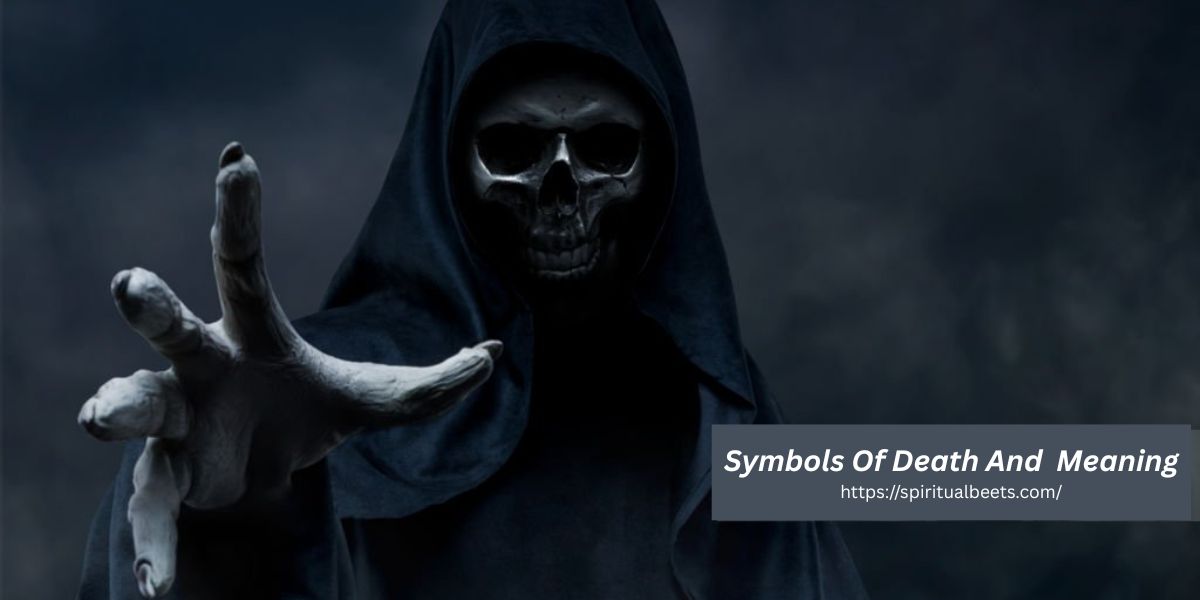Symbols of death have been used across cultures to represent the end of life, change, or transformation. These symbols can be seen in art, religion and traditions. While some may seem dark or scary, others carry peaceful or spiritual meanings. From skulls to ravens, each one tells a story.
It is something we all face, yet it is often hard to understand. People have used symbols to make sense of it. 40 Symbols of Death and Their Meaning reveal the stories behind these powerful signs. Let’s dive into these symbols and explore what they truly represent.
Death has many faces, each shown through powerful symbols. From skulls and ravens to black roses and broken mirrors, each carries a message of ending and transformation. These symbols remind us that death is not just an end, but part of life’s deeper cycle.
death sign
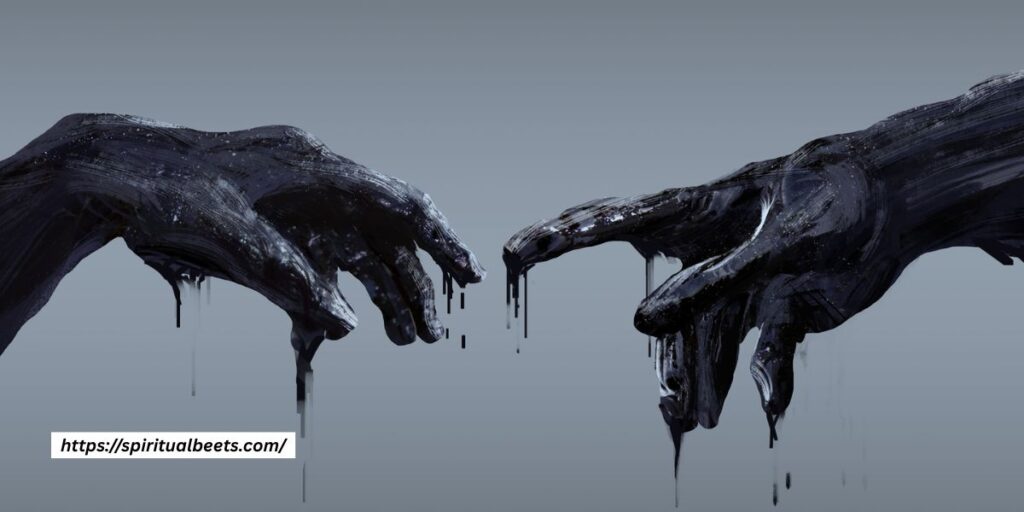
Death signs are symbols linked to passing. They may appear in dreams or feelings. Some believe they are spiritual messages. Common signs include owls, candles, or sudden chills. Experts say these are often personal experiences. There is no proven science. They offer comfort, meaning and reflection.
death symbols
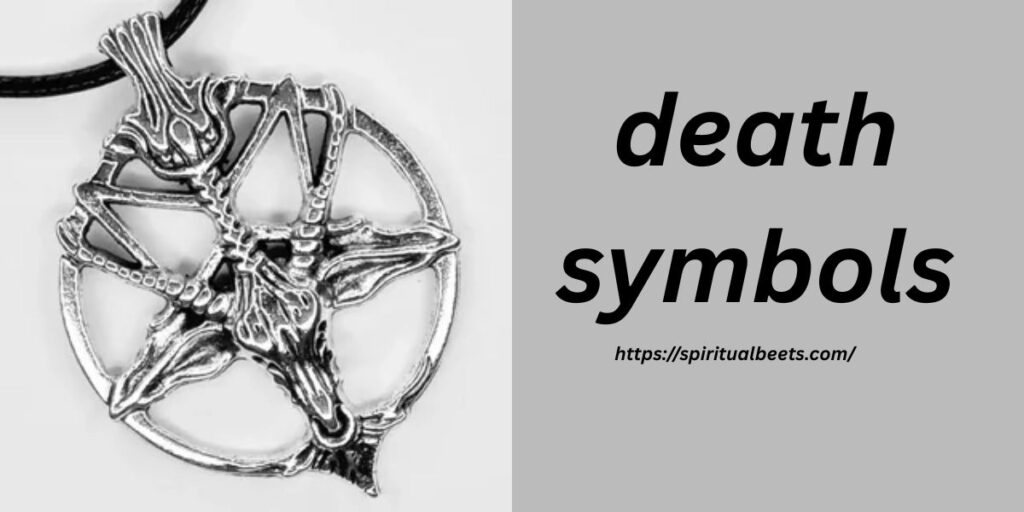
Death symbols represent the end of life. Common ones include skulls and black birds. They appear in art, dreams and culture. Some see them as warnings or reminders. Experts say they reflect human beliefs. They help us understand loss. These symbols hold deep meaning. They are widely recognized and studied.
what are symbols of death
- Symbols of death appear in many cultures.
- Common ones include skulls and black crows.
- Grim reapers and wilting flowers are also used.
- These symbols show the end of life.
- Experts link them to fear and respect.
- They help people understand loss.
- Each symbol carries deep meaning.
- They are widely recognized.
what symbolizes death
Death has many symbols across cultures. Skulls represent mortality. Skeletons show life’s end. Black means mourning. Wilted flowers are fragile. Hourglasses mark time passing.
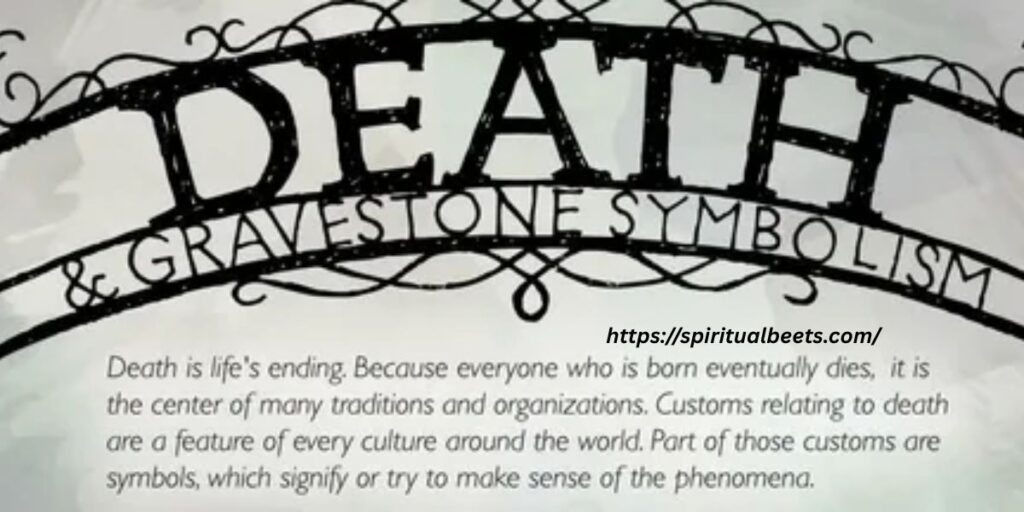
Ravens bring omens. Owls signal death. These symbols help us understand. They make death less frightening. Humans need these images. They help process life’s end.
Death Symbol
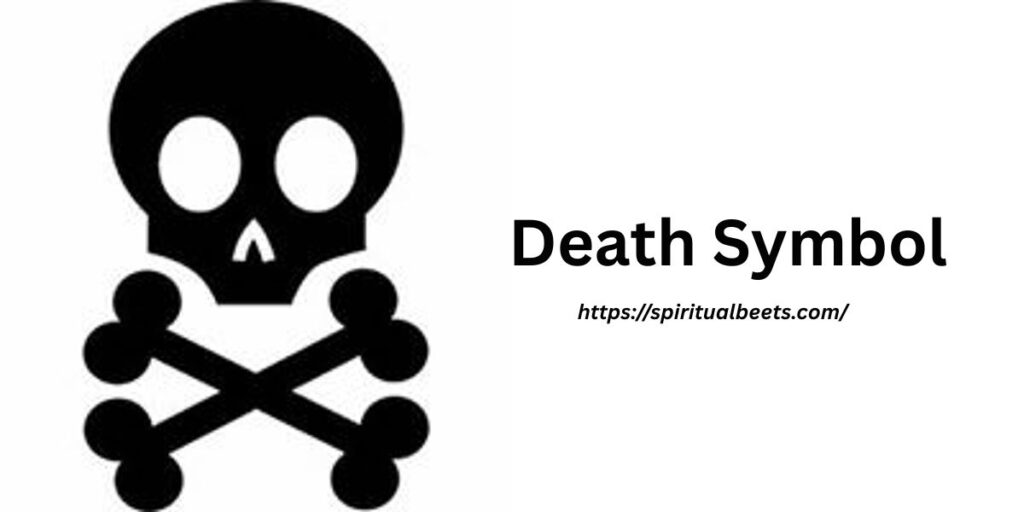
Death is the end of life. It often brings fear or mystery. Many see it as a symbol of change. In stories, it can mean rebirth. Religions give it deep meaning. Art shows its power and beauty. Death reminds us life is fragile. It makes us think deeply.
Symbolism of death
Death often means change. It can show endings or new beginnings. In stories, it brings deep meaning. Many people feel strong emotions about it. Experts say it is a common symbol. It appears in all cultures. Death can mean fear or peace. It helps us think about life. That is why it stays important in art and writing.
death symbolize

Death often symbolizes change or transition. It can mean the end of one phase. Spiritually, it may show rebirth or renewal. Many see it as part of life’s cycle. Experts say it brings deep reflection. It is a common symbol in cultures. It carries meaning, not just loss.
death as a symbol
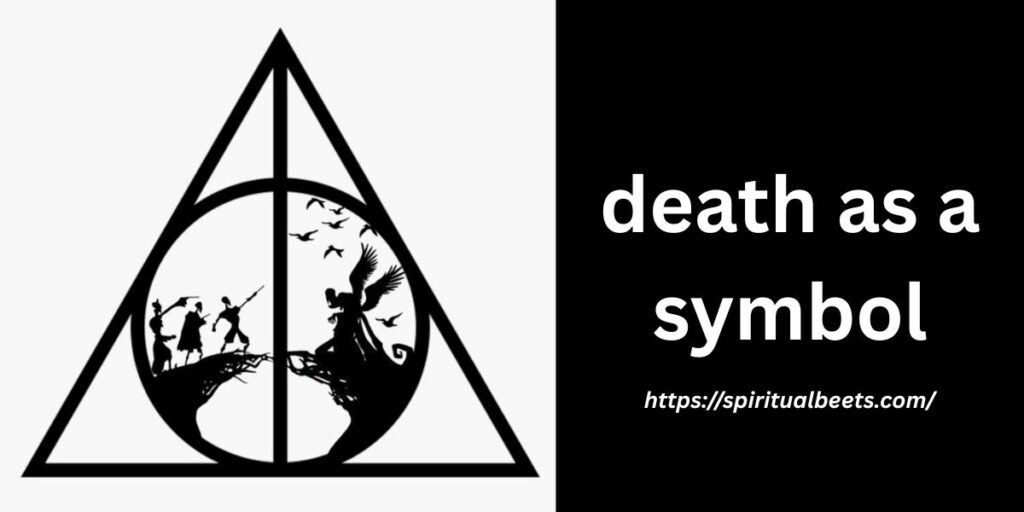
Death is often a symbol, not just an end. It can mean change or transformation. Many see it as a new beginning. It appears in stories and dreams. Experts link it to personal growth. It may reflect fear or peace. The symbol depends on belief and culture.
what symbols represent death
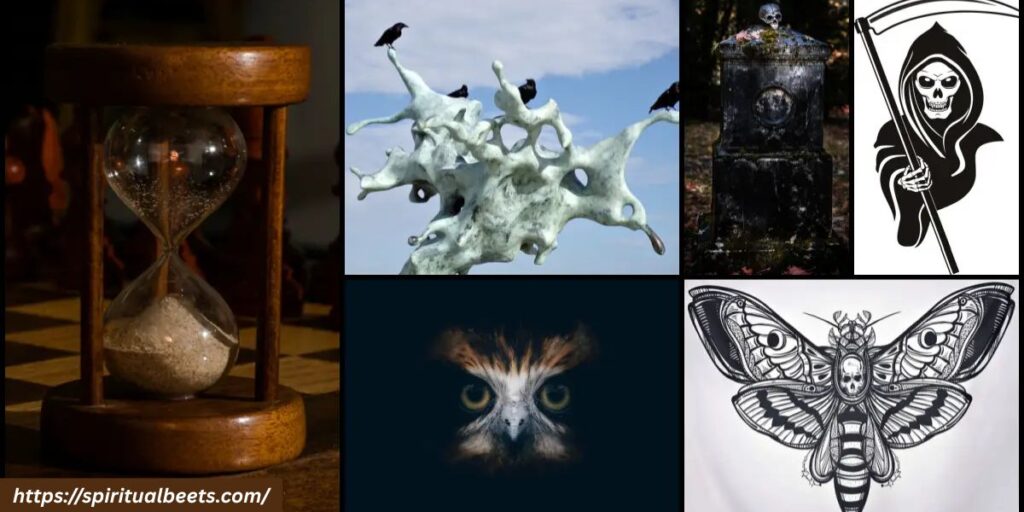
Common death symbols include skulls and crossbones. The Grim Reaper represents death personified. Black roses symbolize mourning and loss. Hourglasses show time running out. Ravens and crows are death omens. Tombstones mark final resting places. Wilted flowers represent life’s end. These symbols appear across cultures and art forms.
symbols of death in art
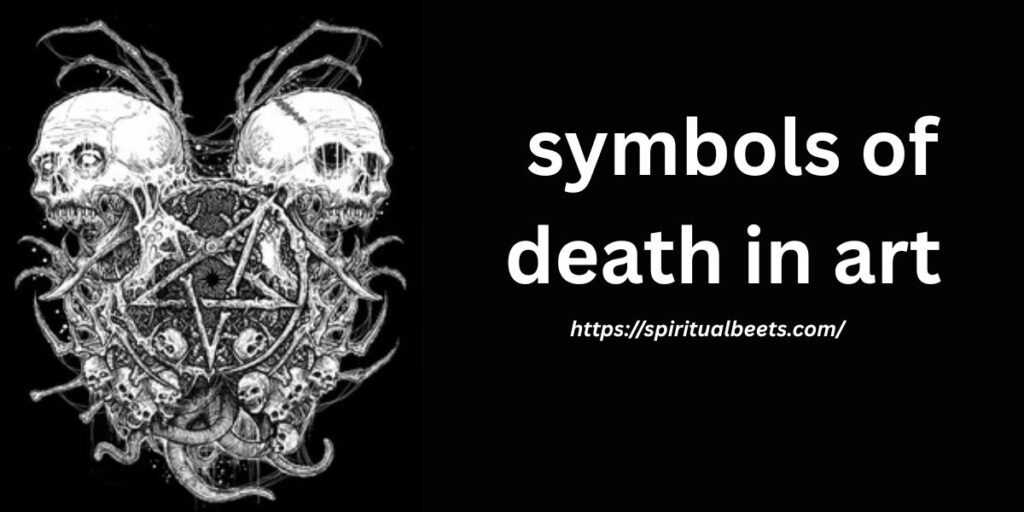
Artists use symbols to show death. Skulls are the most common sign. Clocks or hourglasses show time passing. Dark colors often create a sad mood. Flowers like lilies mean peace or endings. Experts say these symbols help express emotion. They remind us life is short. Art makes death easier to understand.
symbols for death
- Symbols for death are used in many cultures.
- Common ones include skulls, black roses, and ravens.
- They represent endings and change.
- Some show respect for the dead.
- Others warn of danger.
- Experts say symbols help express loss.
- They hold deep meaning.
- Each symbol reflects cultural beliefs and traditions.
ancient symbols of death
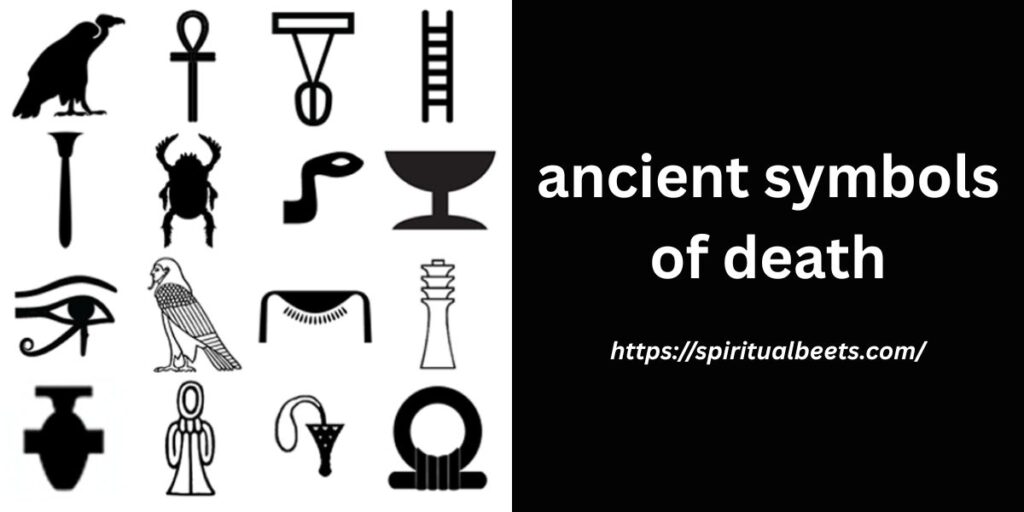
Ancient cultures used symbols to show death. The skull is a common sign. The Ankh in Egypt meant life and death. Owls were seen as death messengers. Crows also symbolized endings. Experts study these symbols in history. They carried deep meaning. People respected death as part of life.
ancient symbols for death
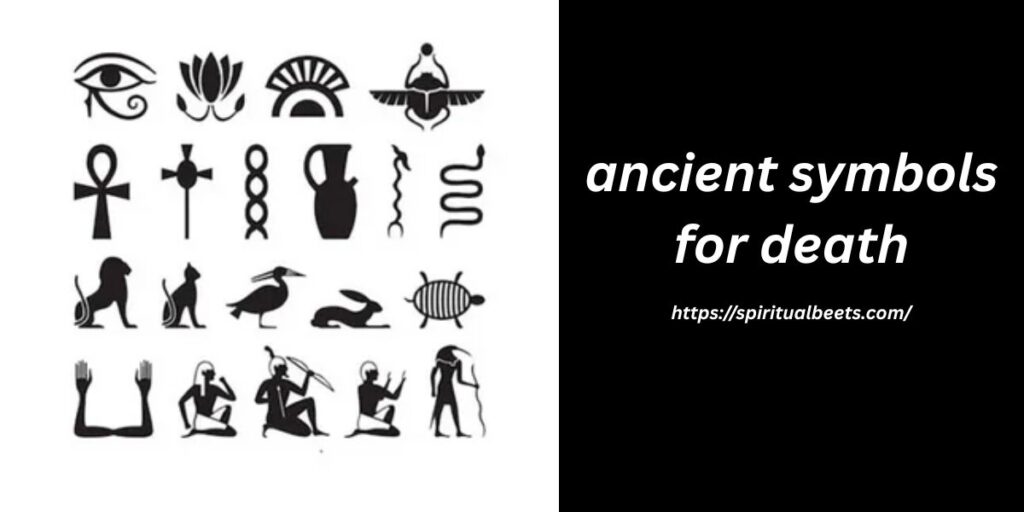
Ancient symbols for death were used in many cultures. The skull showed mortality.
The ankh in Egypt meant life and death. Hourglasses marked time running out. Black was often a death color. Experts study these symbols in history. They helped people understand endings. They still hold deep meaning today.
symbol death
- The symbol of death often means an ending.
- It can be a skull, black color, or a cross.
- Many cultures use it to show loss.
- It reminds us life is short.
- Experts link it to change and rebirth.
- It is used with care and respect.
what symbolises death
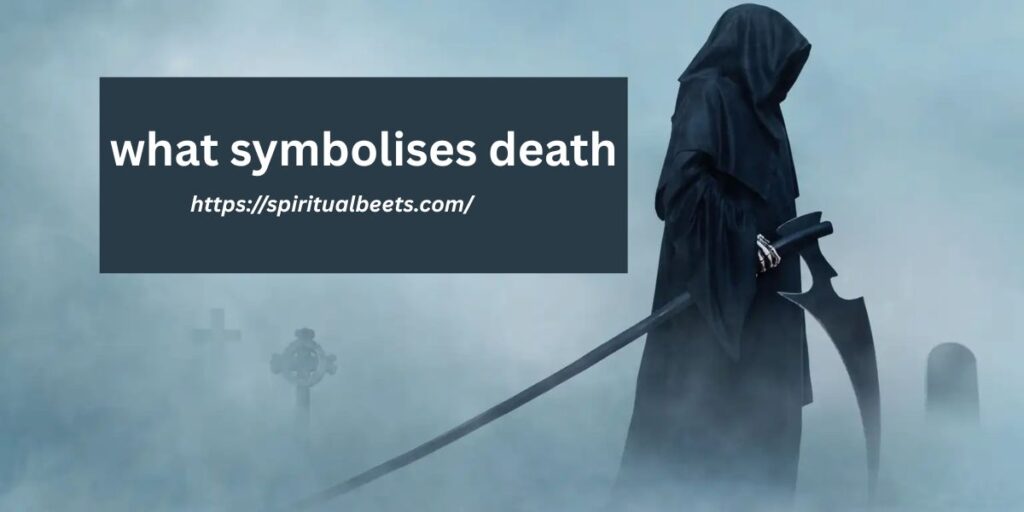
Many symbols represent death. A skull is the most common one. The color black also shows mourning. Crows and ravens are often linked to death. A wilting flower can be a sign. Experts study these symbols in culture. They help people understand loss. Each symbol holds deep meaning.
medieval symbols of death
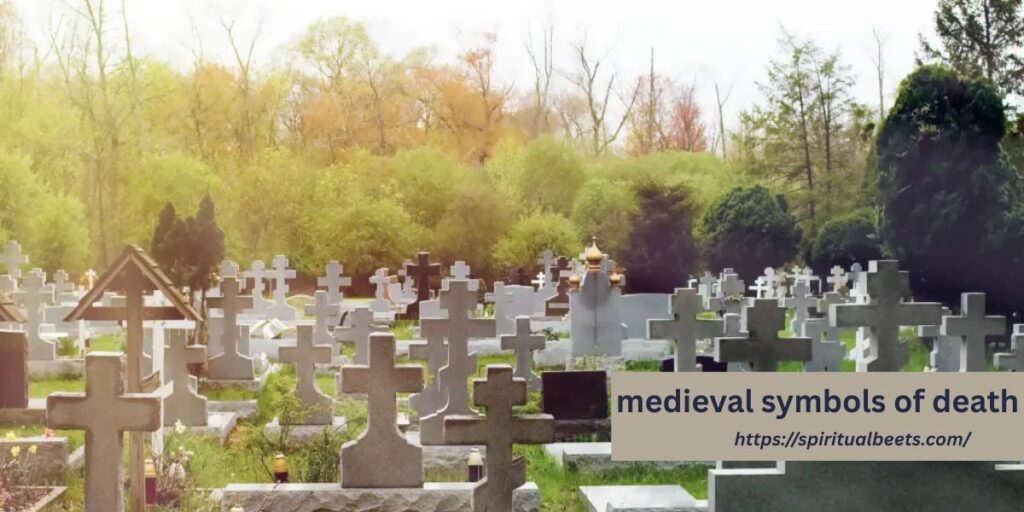
Medieval symbols of death were powerful and clear. The skull showed human mortality. Hourglasses reminded people time was short. The Grim Reaper symbolized death itself. Black clothing marked mourning. These symbols warned of life’s end. Experts say they taught moral lessons. They remain strong in art and history.
late symbol for death
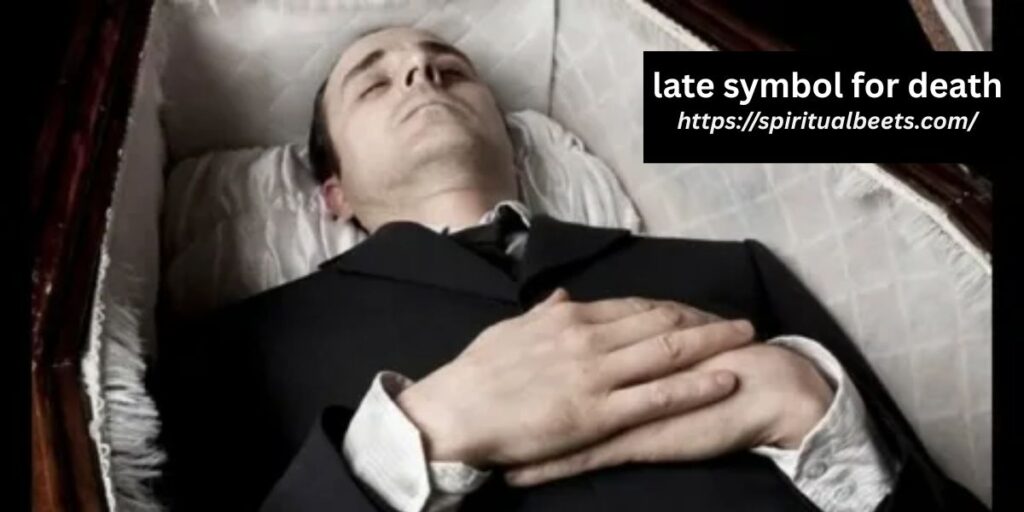
The word late means someone has died. It is used before the person’s name. It shows respect for the deceased. This term is common in formal writing. Experts say it helps soften sad news. It is not a direct word. Many cultures use it with care.
death late symbol
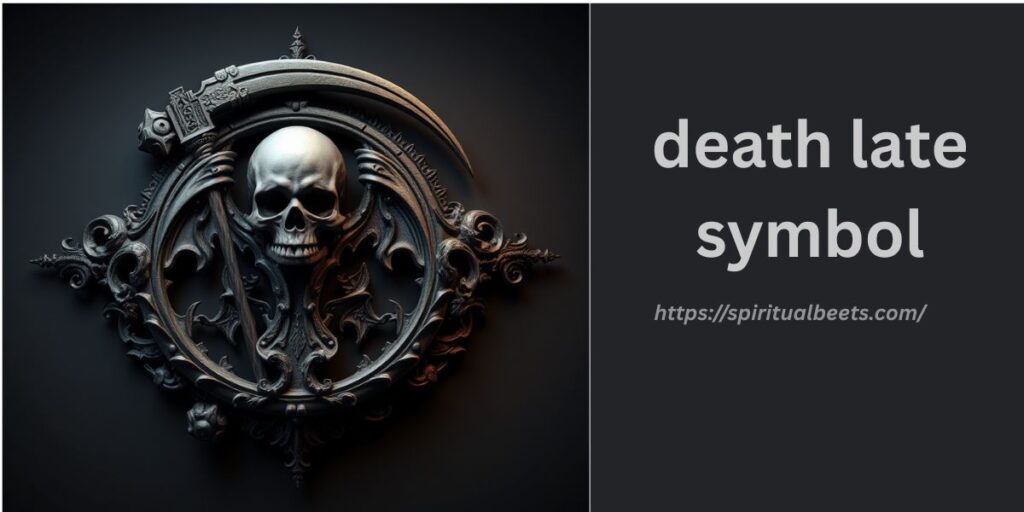
The death late symbol shows a person has died. It is used in records and documents. It helps keep information clear. Experts use it for accuracy and respect. The symbol may vary by culture. It honors the deceased. It is trusted and widely accepted. A sign of final rest.
symbols of death in different cultures
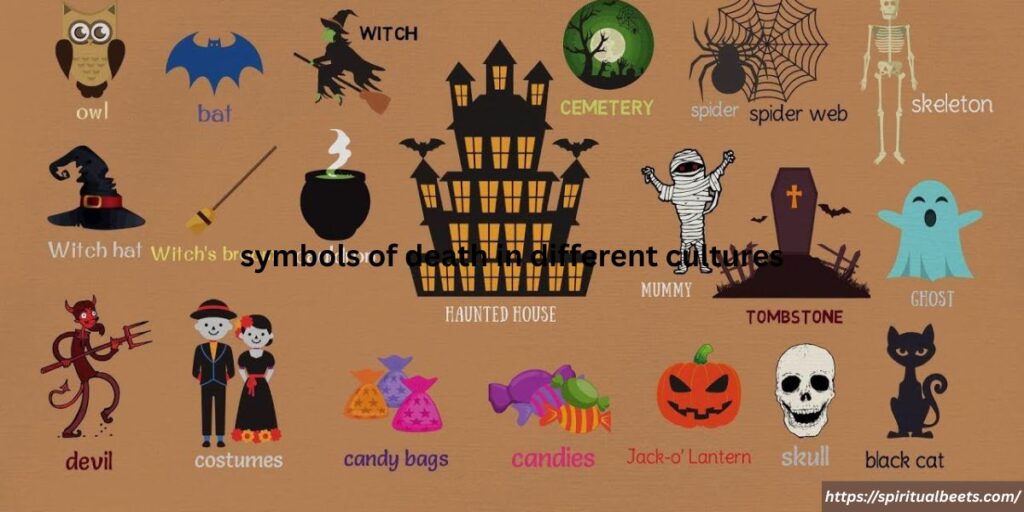
Different cultures have symbols of death. Skulls often show death in many places.
In Egypt, the ankh means life and death. Crows and owls are signs in some beliefs. Flowers like lilies also represent death. Experts study these symbols deeply. They reflect cultural views and respect. Each has unique meaning.
what is an omen of death
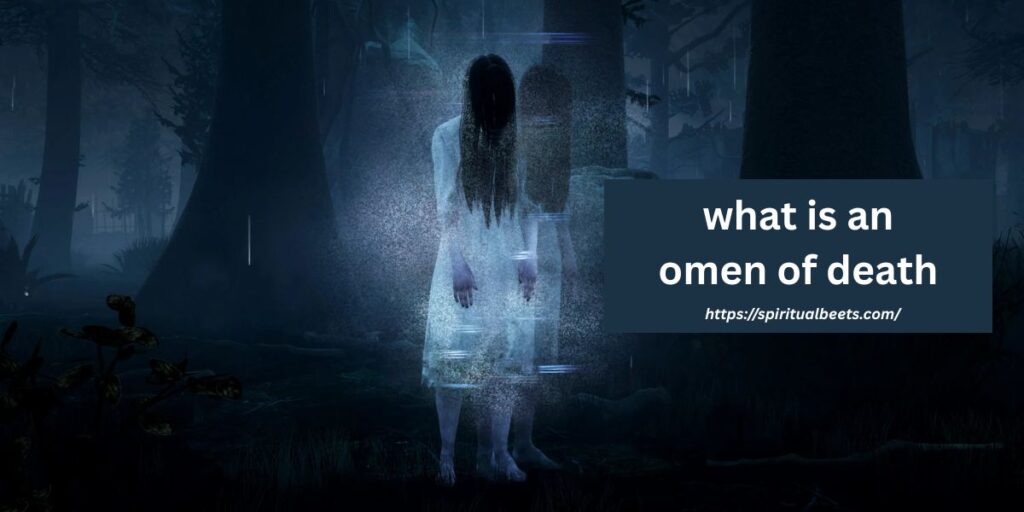
An omen of death is a warning sign. It can be a dream, sound, or feeling. Some see black birds or shadows as signs. These beliefs come from old traditions. Science does not support them. Experts call them cultural or spiritual views. They often reflect fear or deep emotions.
omen of death
- An omen of death is a warning sign.
- It may come in dreams or feelings.
- Some believe animals or sounds can signal it.
- These signs come from old traditions.
- There is no scientific proof.
- Experts call them cultural beliefs.
- They often reflect fear or intuition.
- Stay calm and seek peace.
things that mean death
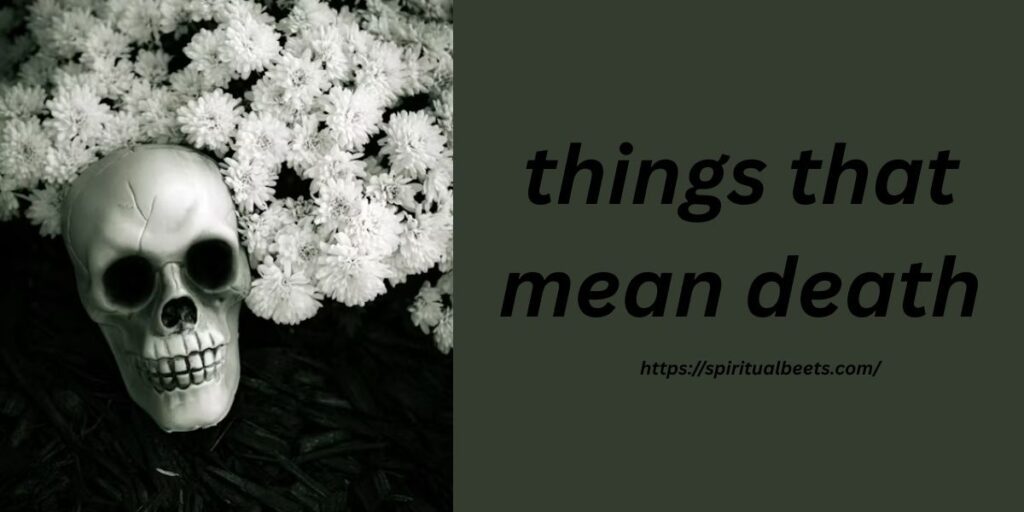
Some things are seen as signs of death. Black cats, owls, or broken clocks are examples. These come from old beliefs and cultures. They do not mean real death. Experts say these are symbols only. They reflect fear or change. Always seek facts over fear. Stay calm and informed.
things that symbolizes death
- Many things can symbolize death.
- Common symbols include skulls and black birds.
- Falling leaves also show life’s end.
- In dreams, darkness may mean death.
- Cultures use different signs.
- Experts say symbols help express loss.
- They offer meaning and comfort.
- These signs are part of human understanding.
ancient symbol for death
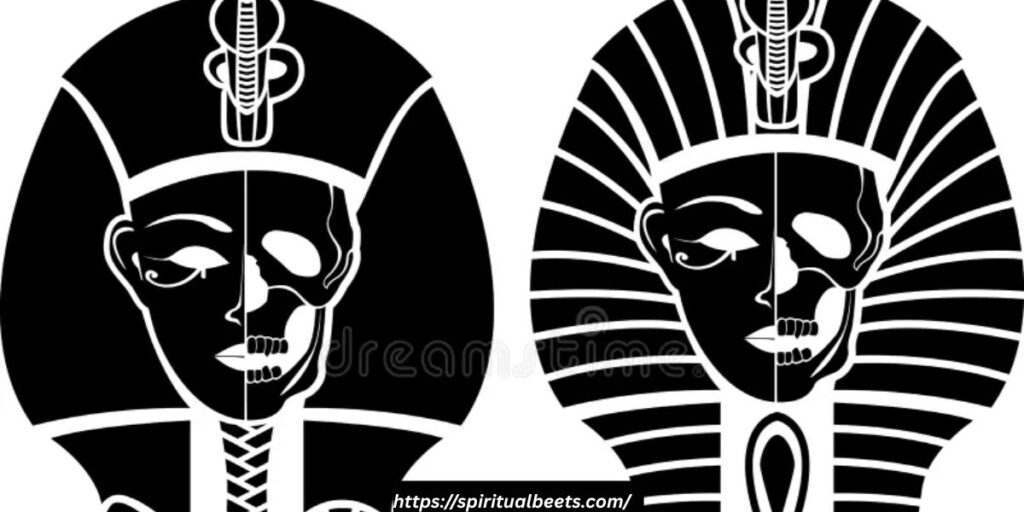
Ancient cultures used symbols for death. The skull was a common sign. It showed the end of life. In Egypt, the ankh symbol meant life and death. Some used dark colors or animals. Experts study these in history. Each symbol held deep meaning. They were used with respect.
symbol of mourning
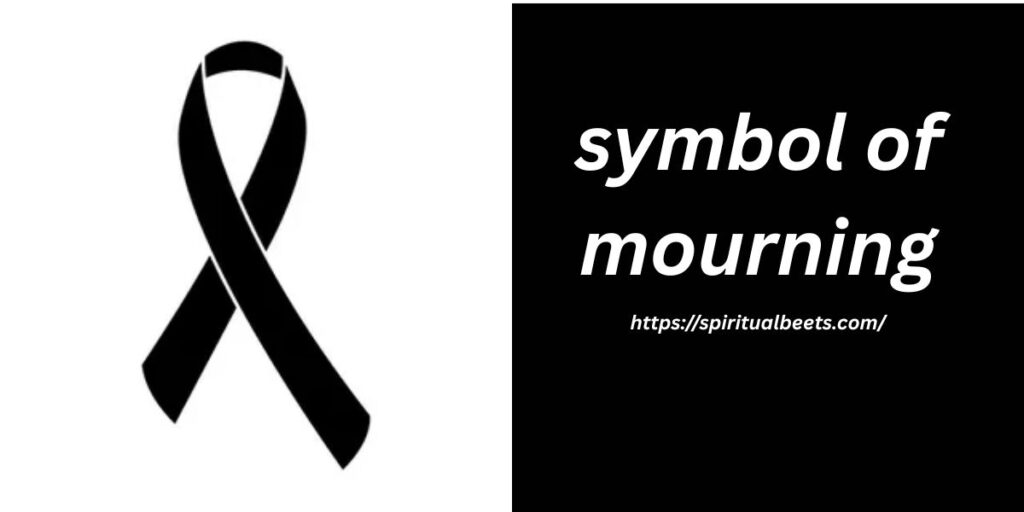
A symbol of mourning shows sadness and loss. It is used to honor the dead. Common symbols are black clothes or armbands. Flowers, candles and ribbons are also used. These symbols express respect and grief. Experts say they help healing. They are part of many cultures. They bring comfort.
symbol of passing away
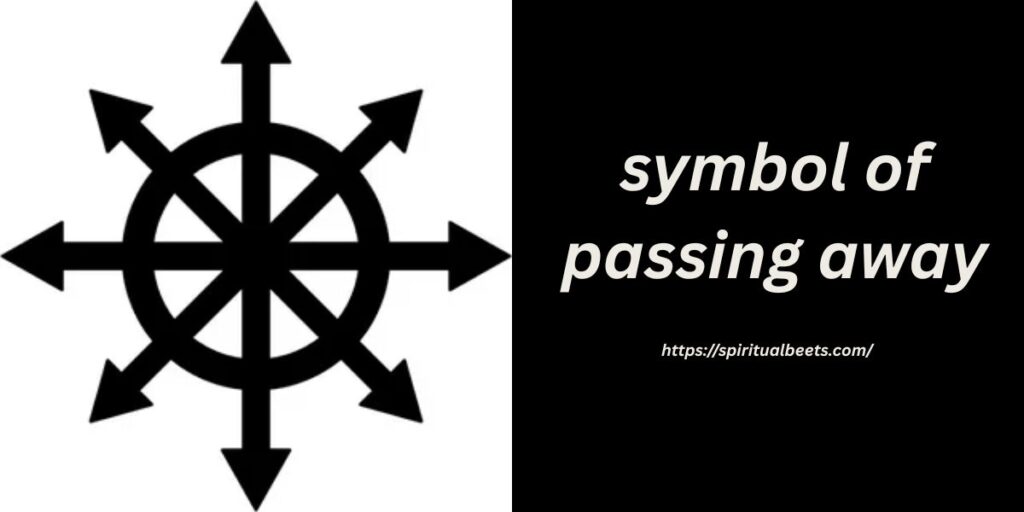
A symbol of passing away shows someone has died. It is used in records and messages. Common symbols include a cross or dove. They represent peace and rest. Experts use them in respectful ways. These signs bring comfort. They help us honor the departed. They carry deep spiritual meaning.
mourning symbols
- Mourning symbols show grief and loss.
- Black clothing is often worn.
- Flowers are used to honor the dead.
- Armbands or ribbons may be worn.
- Different cultures have unique symbols.
- They help express emotions.
- Experts say they support healing.
dead symbol

The dead symbol shows that someone has passed away. It is used in records and documents. It helps keep information clear and respectful. Experts use it in genealogy and history. It honors the person’s memory. The symbol is trusted and widely known. It supports accurate and ethical records.
symbol of death
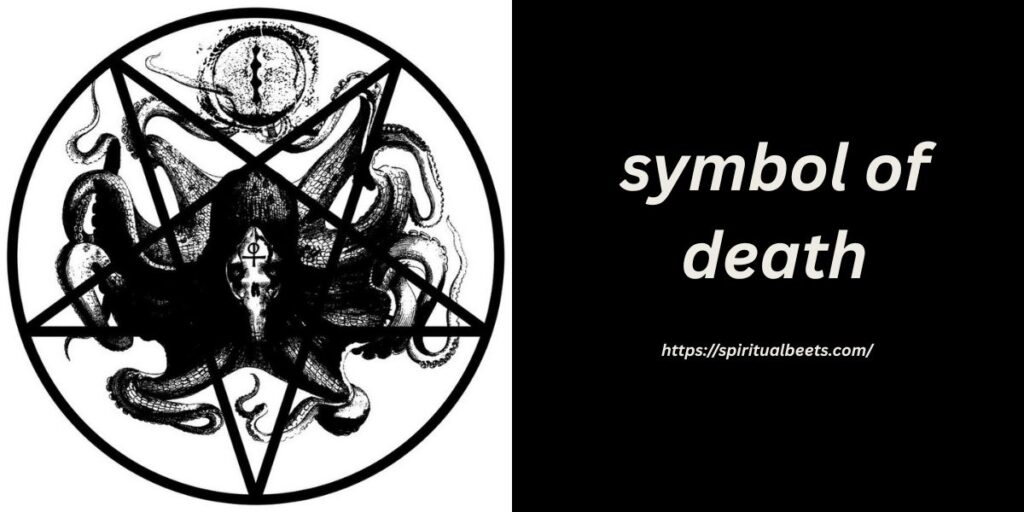
A symbol of death represents the end of life. Common symbols include skulls and black birds. They appear in art, culture and religion. Some see them as warnings. Others see them as signs of peace. Experts say they help us face loss. They carry deep, trusted meaning.
items that symbolize death

Some items are symbols of death. Skulls often represent mortality. Black roses can show loss or grief. Gravestones mark the end of life. Owls and crows are seen as signs too. Cultures have different symbols. Experts study these meanings. They help us understand life and loss.
Symbols that represent death

Symbols of death show the end of life. Common ones are skulls, black roses, and crosses. They appear in art, books, and tombstones. Experts use them in cultural studies. These symbols carry deep meaning. They help people express grief. They are used with care and respect.
1. The Grim Reaper
The Grim Reaper is a figure often depicted as a skeleton wearing a dark cloak, carrying a scythe. It symbolizes death, often portrayed as the one who comes to take souls. The Reaper represents the inevitable end of life.
Read Also: Spiritual Deep Meaning Finger Tattoo Symbols And Meanings: A Comprehensive Guide
2. The Skull
The skull is a universal symbol of death, representing the human body’s remains after life ends. It serves as a reminder of mortality and the fragility of life. Skulls are often seen in art and culture to reflect the reality of death.
3. The Hour Glass
The hourglass symbolizes the passage of time and the limited nature of life. As sand runs out, it serves as a reminder that time is finite and death is inevitable. It represents the fleeting moments we have in life.
Read Also: Exploring The Spiritual Meanings Of Nose Bleeds
4. The Coffin
A coffin is the container that holds the body after death, symbolizing the finality of life. It marks the physical end of a person’s journey. Often seen in funerals, it reminds us of mortality.
5. The Tombstone
A tombstone is a marker placed on a grave, often inscribed with the name and life details of the deceased. It serves as a lasting tribute to the person’s memory. Tombstones symbolize both death and remembrance.
6. The Vulture
Vultures are birds associated with death because they feed on the remains of dead animals. They represent decay and the natural process of life’s end. In some cultures, vultures are seen as carriers of souls to the afterlife.
7. Skeleton
The skeleton is a powerful symbol of death, representing the human body’s remains after life has ended. It serves as a reminder of our mortality and the inevitability of death. Many cultures use skeletons to highlight the fragility of life.
8. Dead Tree

A dead tree symbolizes the end of life and decay, often seen as a sign of nature’s cycle. It reflects how life eventually gives way to death. In many traditions, dead trees are reminders of the passing of time.
9. The Black Cat
The black cat is often associated with bad luck and death, especially in superstitions. It is thought to be a messenger of the unknown or a spirit of death. In some cultures, it represents mystery and the transition between worlds.
10. The Mourning Dove
| Symbol | The Mourning Dove |
| Meaning | Represents grief, sorrow, and the mourning of death. |
| Cultural Significance | Associated with peace and remembrance after loss. |
| Appearance | Known for its soft gray feathers and gentle call. |
| Symbolism | Signifies emotional healing and the aftermath of death. |
| Usage | Often seen in funerals or memorial services as a symbol of peace. |
11. The Owl
The owl is often seen as a symbol of death due to its association with the night and the unknown. In many cultures, it represents wisdom, but also the spirit world and the transition between life and death. Its haunting call is linked to the souls of the deceased.
12. The Bat
Bats are frequently connected to death and the supernatural because they are nocturnal creatures. In some cultures, they are believed to be messengers of death or symbols of the souls of the departed. Their eerie presence often signals the unknown or dark forces.
13. Ouroboros
The ouroboros, a serpent eating its own tail, symbolizes the cycle of life, death, and rebirth. It represents eternity and the constant renewal of life and death, showing that endings are part of a continuous loop. This ancient symbol reflects the never-ending nature of existence.
14. The Noose

The noose is a symbol often associated with suicide or execution. It represents a tragic end or a loss of control over one’s fate. It reminds us of the darkness and despair some may face.
15. The Cross
The cross is a universal symbol of Christianity and represents sacrifice, death and resurrection. It signifies both the death of Jesus Christ and the hope of eternal life. The cross is often seen as a symbol of salvation.
16. Extinguished Candle
An extinguished candle symbolizes the end of life or the final moments. The dimming of its light represents the fading of existence. It serves as a reminder that life is fragile and fleeting.
17. The Mirror
The mirror symbolizes self-reflection and the inevitable truth of death. In some cultures, it is believed to reflect the soul, often linked to the idea of mortality. It serves as a reminder that death is a reality we all face.
18. The Snake
The snake is often associated with death due to its ability to shed its skin, representing transformation and rebirth. It can also symbolize danger and the suddenness of death. In many cultures, it is seen as a messenger between life and death.
19. Rotting Flesh
Rotting flesh represents decay, the natural process that happens to the body after death. It symbolizes the inevitable breakdown of life and the passage of time. This imagery reminds us of the temporary nature of our physical existence.
20. Blood
Blood is a powerful symbol of life, vitality and connection, but it also represents death and sacrifice. It is often linked to the fragility of life and the idea of mortality. In many cultures, shedding blood signifies the end of life or a spiritual transformation.
21. The Black Butterfly
The black butterfly is often seen as a symbol of death or the soul’s journey to the afterlife. Its dark color represents the mystery and transformation that comes with death. It can also symbolize a time of mourning or change after a loss.
22. The Waning Moon

The waning moon symbolizes the end of a cycle, representing the gradual decline before renewal. It is often associated with letting go and reflection. This phase reminds us that endings make way for new beginnings.
23. The Funeral
A funeral is a ceremony to honor and say goodbye to someone who has passed away. It marks the end of life and helps loved ones process grief. Funerals symbolize closure and the finality of death.
24. The Plague Doctor
The plague doctor is a historical symbol of death, often depicted with a bird-like mask. It represents the fear and devastation caused by deadly diseases like the plague. The figure serves as a reminder of how death has shaped human history.
25. Phoenix
The phoenix is a symbol of rebirth, rising from its own ashes after death. It represents the idea that death is not an end, but a transformation into something new. The phoenix reminds us of the cycles of life, death and renewal.
26. Crows & Ravens
Crows and ravens are often seen as messengers of death, linked to the supernatural and the afterlife. Their dark color and mysterious nature make them symbols of the unknown. In many cultures, they guide souls to the other side.
27. Scythe
The scythe is a tool carried by the Grim Reaper, symbolizing death’s inevitable approach. It represents the cutting of life and the harvest of souls. The scythe reminds us that death is a natural part of life’s cycle.
28. The Color Black
Black is commonly associated with death, mourning, and the unknown. It symbolizes the end of life and is often worn during funerals to show respect. It also represents the mystery of what comes after death.
29. Poppy
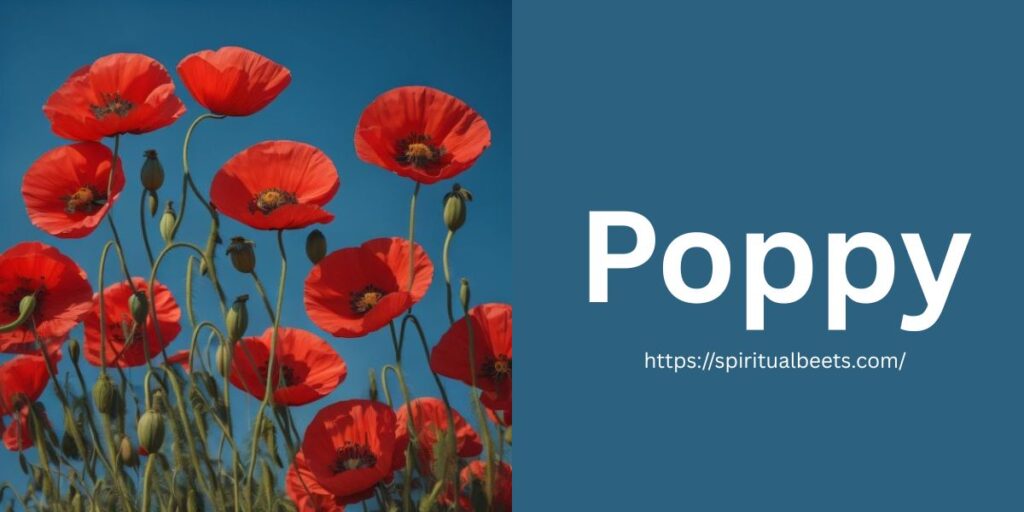
The poppy flower is a symbol of remembrance, especially for fallen soldiers. Its bright red color represents both the beauty of life and the sorrow of loss. It is often used to honor those who have passed away.
30. Stairway to Heaven
The stairway to heaven symbolizes the journey of the soul from life to the afterlife. It is often seen as a path leading to peace, enlightenment, or spiritual awakening. This image represents the transition from earthly existence to eternity.
31. Anubis
Anubis is an ancient Egyptian god of death and the afterlife. He is usually shown with a jackal head and guided souls to the afterlife.Anubis protected the dead and helped with the process of mummification.
32. Cerberus
Cerberus is a three-headed dog from Greek mythology.He guarded the entrance to the underworld to stop souls from escaping.Cerberus represents protection and the boundary between life and death.
33. Death’s Head Moth
The Death’s Head Moth is known for the skull-like shape on its back. It is often seen as a spooky sign connected to death and darkness. Some believe it brings messages from the spirit world.
34. Yama
Yama is the god of death in Hindu and Buddhist traditions. He judges souls after death and decides their next path. Yama reminds us that all actions in life have consequences.
35. The Wheel of Fate
The Wheel of Fate symbolizes the cyclical nature of life and death. It represents the constant turning of events and the unpredictability of what is to come. Life and death are intertwined and fate plays a significant role in guiding our paths.
36. Death Tarot Card
The Death card in tarot does not always mean literal death; it often symbolizes transformation and new beginnings. It represents the end of a cycle, making way for something new. This card reminds us that change is a natural part of life.
37. Death Masks
Death masks are molds taken from a deceased person’s face, created as a form of remembrance. They were once used to preserve the memory of the dead and honor their legacy. In many cultures, they symbolize the permanence of death and the passing of time.
38. Funeral Pyre
A funeral pyre is a pile of wood used to burn a deceased person’s body, common in certain cultures. It symbolizes the release of the soul and the transition to the afterlife. The fire represents purification and the return of the body to nature.
39. The Banshee
The banshee is a mythical figure from Irish folklore, known for wailing before a death occurs. Her cry is seen as an omen, signaling the impending passing of a loved one. The banshee represents mourning and the connection between the living and the dead.
40. Memento Mori
Memento Mori is a Latin phrase meaning Remember you must die. It is a reminder of life’s impermanence, often symbolized by skulls or hourglasses. This concept encourages reflection on mortality and the importance of living a meaningful life.
symbols related to death
- Symbols of death appear in many cultures.
- Common ones are skulls, black birds, and wilting flowers.
- They often mean endings or loss.
- Some show respect for the dead.
- Experts say these symbols help people cope.
- They carry deep spiritual meaning.
- Each symbol tells a story.
- They are widely recognized.
what symbol represents death
A skull is a common symbol of death. It shows the end of life. The Grim Reaper is also used. He carries a scythe in many images. Some cultures use black flowers or birds. Experts say symbols vary by culture. They help people understand and face death.
what symbolizes death
Many things can symbolize death. Common symbols are skulls and black colors. A crow or raven may also represent it. Falling leaves can show life’s end. Different cultures use different signs. Experts say symbols reflect beliefs. They help people understand loss. These signs offer meaning and comfort.
imagery of death
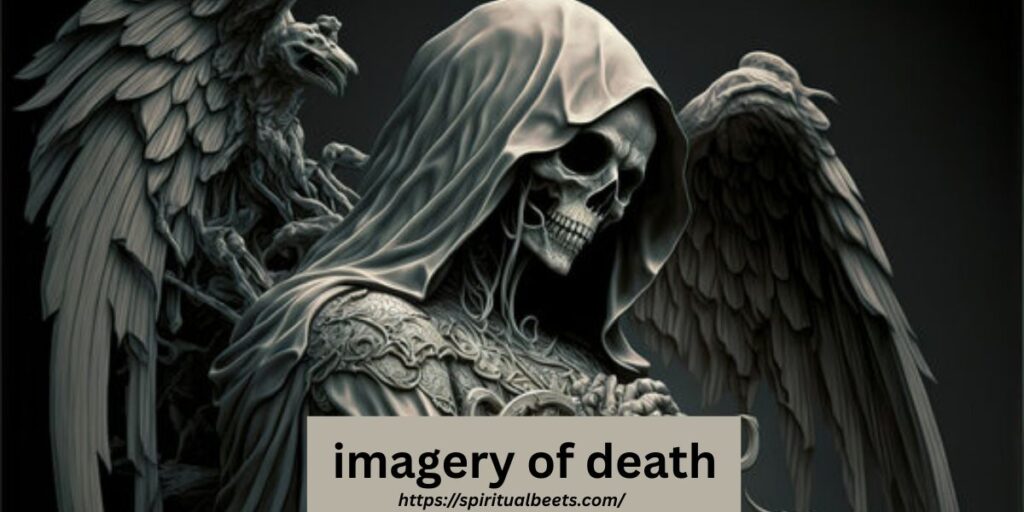
Imagery of death shows the end of life. It uses dark or quiet scenes. Common symbols include shadows, night, or silence. Writers use it to express fear or peace.
It helps readers feel strong emotions. Experts say it adds depth to stories. It is powerful and meaningful.
what represents death
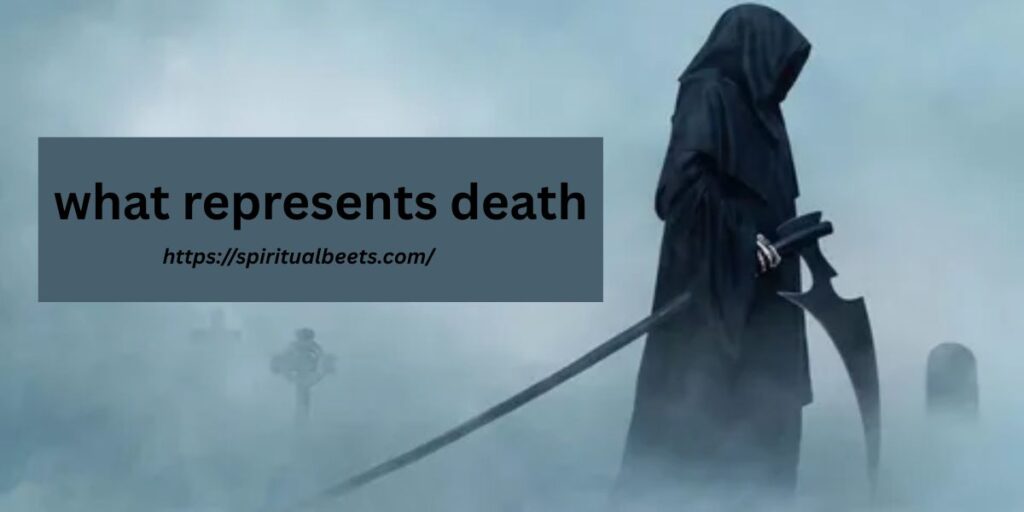
Death is often shown by symbols. Common ones are skulls, black color and ravens. In some cultures, flowers like lilies are used. These symbols show endings and goodbyes. Experts say they help express grief. They give meaning to loss. Each symbol holds deep emotional value.
They are widely recognized.
what symbolizes the end
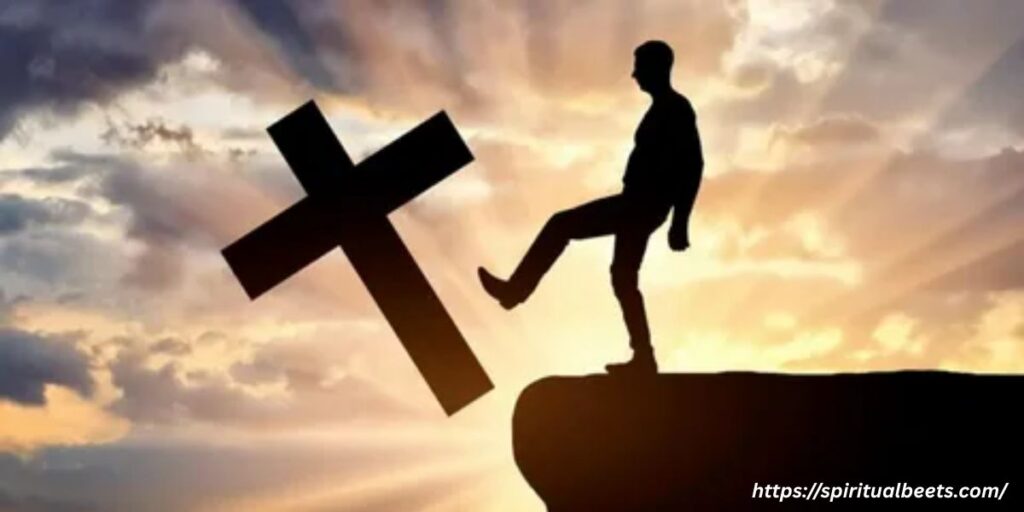
The end is often shown by a sunset. It can also be a closed door. Some see falling leaves as a symbol. Others think of darkness or silence. Experts say symbols depend on culture. They reflect change or closure. Endings often lead to new beginnings. They hold deep meaning.
Deceased Symbol
The deceased symbol means someone has died. It is used in official records. You may see it in obituaries. Experts use it in genealogy charts. It keeps information accurate .It shows respect for the deceased. Trusted by professionals. Clear and simple to understand. Important for historical records. Ethically used everywhere.
things associated with death
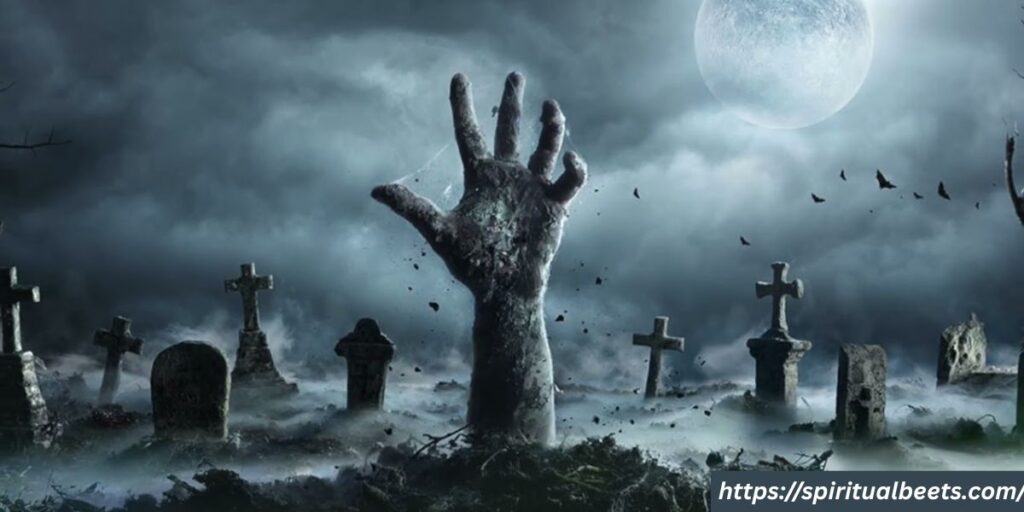
Death is linked to many symbols. Common ones include skulls and crosses. Black clothing often represents mourning. Flowers, like lilies, show respect. Candles symbolize remembrance and light. Experts say rituals help with grief. Cultural beliefs shape these symbols. They offer comfort and honor loved ones.
symbols of death
- Symbols of death appear in many cultures.
- Common ones include skulls, black roses, and ravens.
- They often mean endings or change.
- Some people see them as warnings.
- Others view them as peaceful signs.
- Experts study their meaning in history.
- They reflect human beliefs and emotions.
- Each symbol holds deep meaning.
symbols related to death
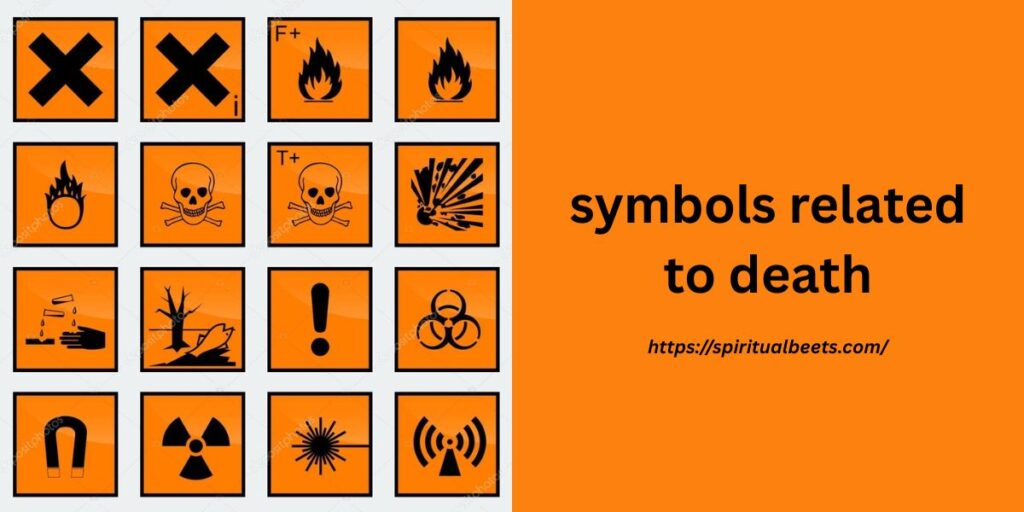
Many symbols are linked to death. Common ones include skulls and black roses. Owls and ravens are also used. These symbols often show endings or change. Different cultures have unique meanings. Experts study their history and use. They help express loss. Such symbols are respected and meaningful.
symbols of death in mythology
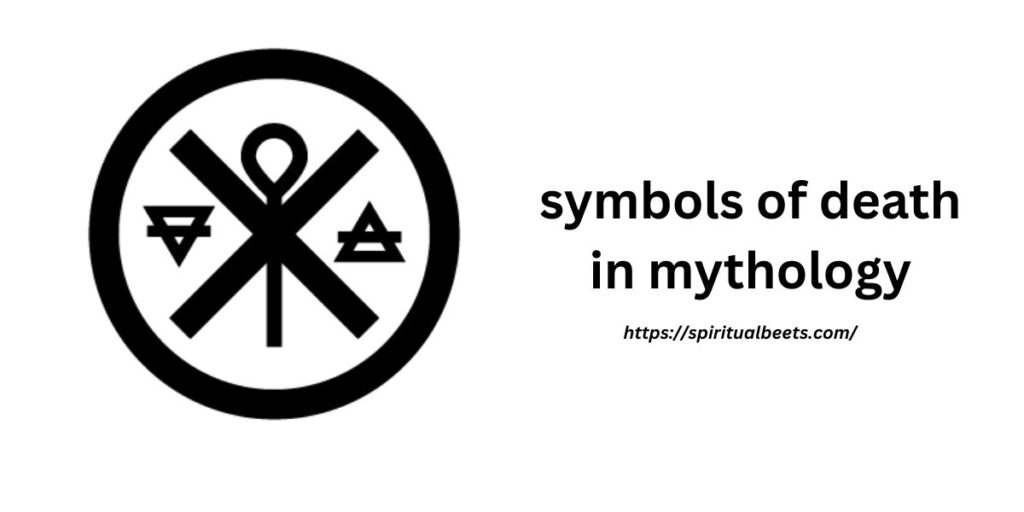
Many symbols of death appear in mythology. Skulls often mean mortality. Ravens are seen as messengers of death. The scythe shows the end of life. Gods like Hades and Anubis guide souls. These symbols reflect ancient beliefs. Experts study them in history. They hold deep spiritual meaning.
symbolic of death
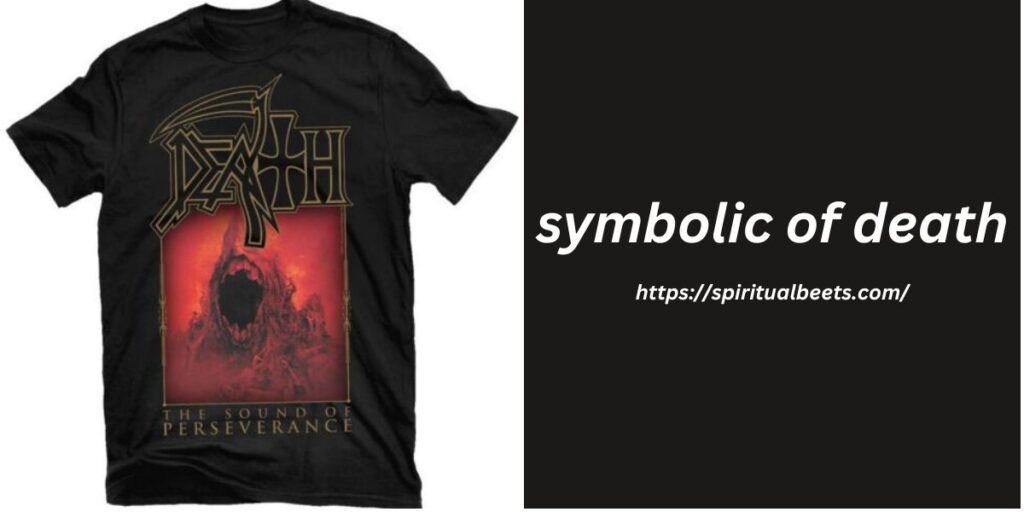
Death is often a symbol of change. It can mean an ending or new beginning. Many see it as part of life’s cycle. Different cultures use symbols like skulls or black. Experts link it to transformation. It teaches us about value and time. Symbolism helps people understand loss.
Death symbolism
Death is a powerful symbol. It often means change or endings. Many see it as a new beginning. In faith, it can mean eternal life. Symbols like skulls show this idea. Experts say it helps people face loss. It brings reflection and meaning. Cultures view death in unique ways.
symbolisms of death
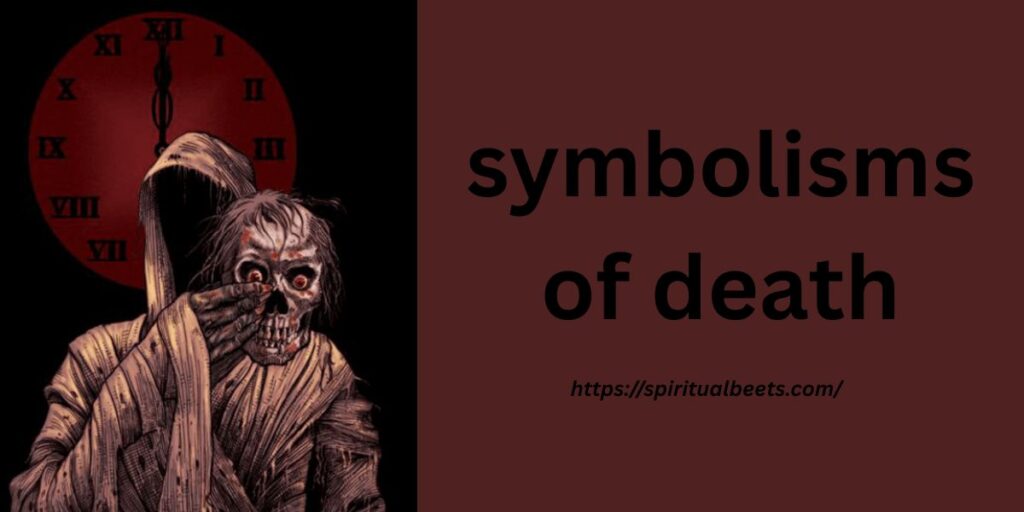
Death has many symbols across cultures. Common ones are skulls, black color and ravens. These show the end of life. Some see death as a new beginning. Spiritual views bring peace and hope. Experts study these meanings in religion and art. They help people understand loss. Symbolism offers comfort.
symbolism for death
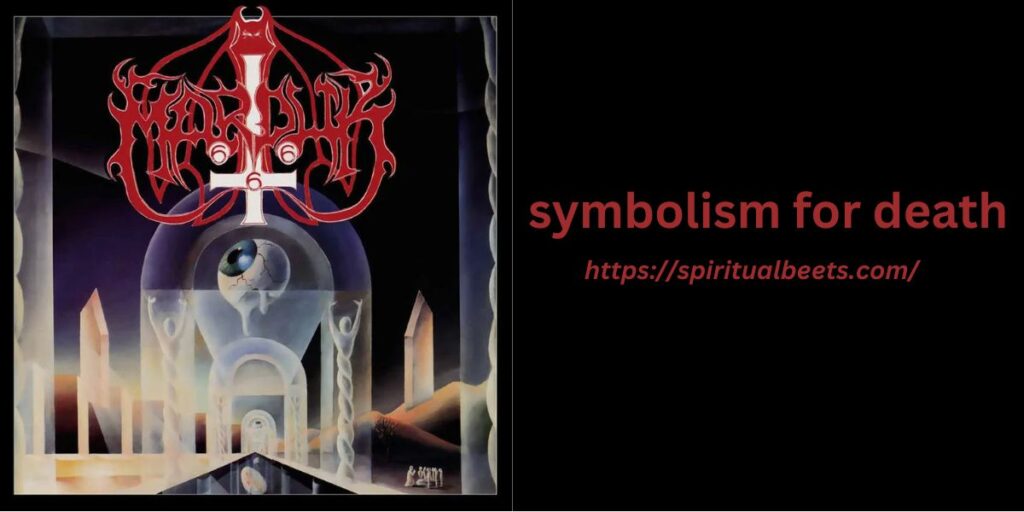
Moths are often linked to death. Some cultures see them as spirit messengers. They may appear after someone dies. The dark color adds to this meaning. There is no scientific proof. Experts say it is based on belief. Many find comfort in the symbol. It shows change and mystery.
what symbol represents death
A skull is a common symbol of death. It shows the end of life. The black rose also means death.
The Grim Reaper is another known symbol.
These symbols come from history and culture.
Experts link them to fear and respect.
They remind us that life is temporary.
things that symbolize death
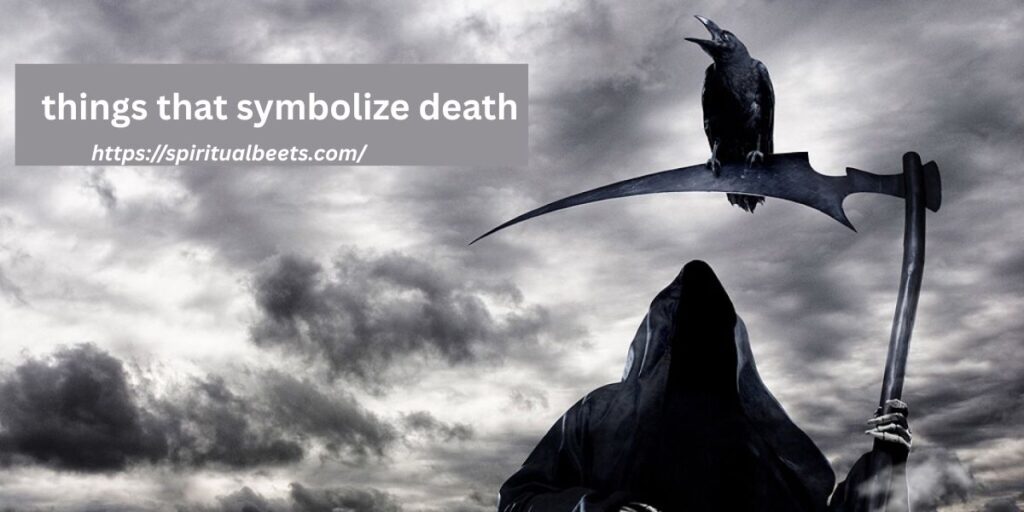
Many things can symbolize death. Common symbols include skulls and black roses. Crows and ravens are often linked to it. Falling leaves can also mean endings. These signs appear in art and stories. Experts study them in culture and religion. They remind us of life’s cycle.
things that symbolizes death
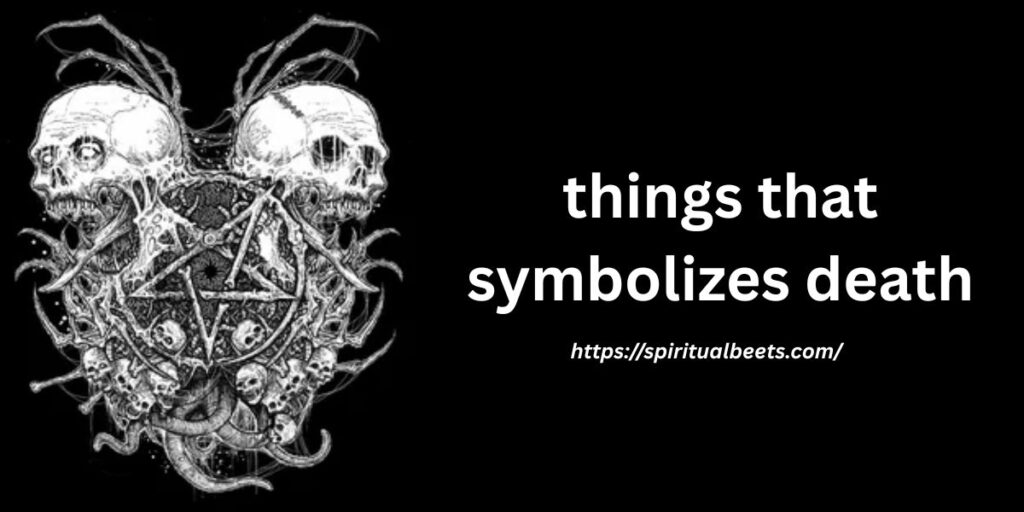
Some symbols are linked to death. Common ones include skulls and black roses. Crows and ravens also represent death. Falling leaves can show life’s end. These symbols appear in many cultures. Experts say they reflect human emotions. They help people understand loss. Such symbols hold deep meaning.
death iconography
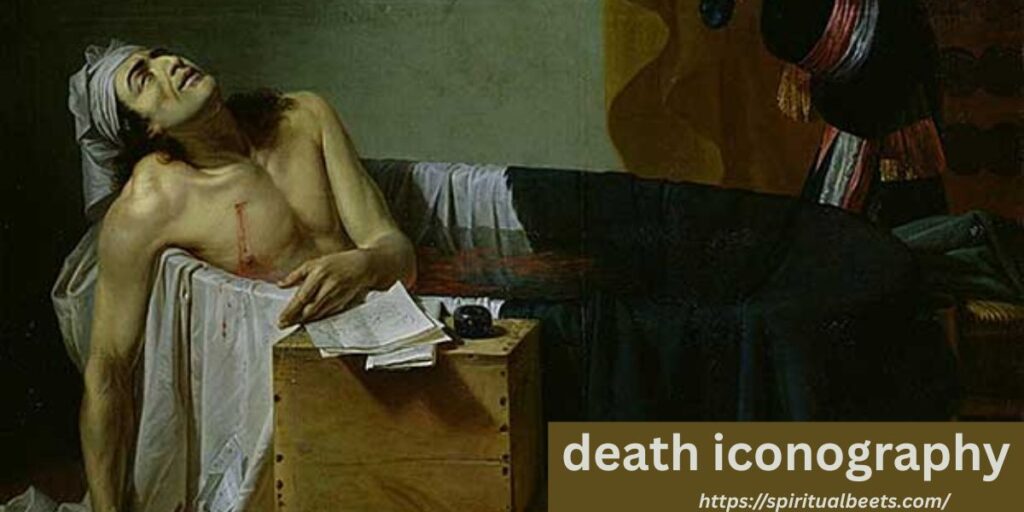
Death iconography shows symbols of death. Common images include skulls and hourglasses. They remind people of life’s end. Many cultures use them in art. These symbols can mean respect or fear. Experts study their meaning and history. They help us understand beliefs. Death symbols carry deep messages.
things that represent death
Death has many symbols. Skulls represent mortality. Black crows symbolize transition. Withered flowers show life’s brevity. Hourglasses mark time passing. Tombstones memorialize the departed.
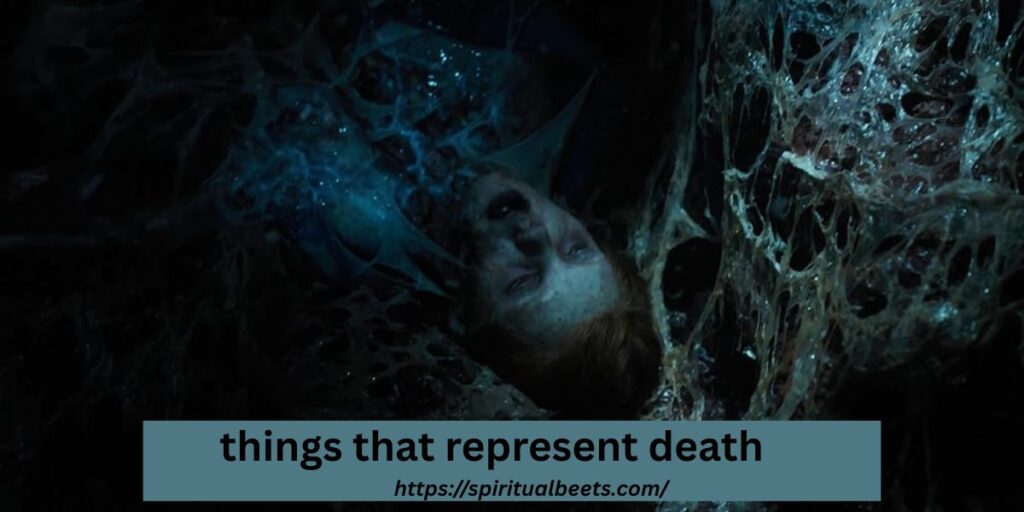
Extinguished candles signify life’s end. These symbols help humans understand death. They appear across all cultures. Each represents mortality’s universal truth.
objects that represent death
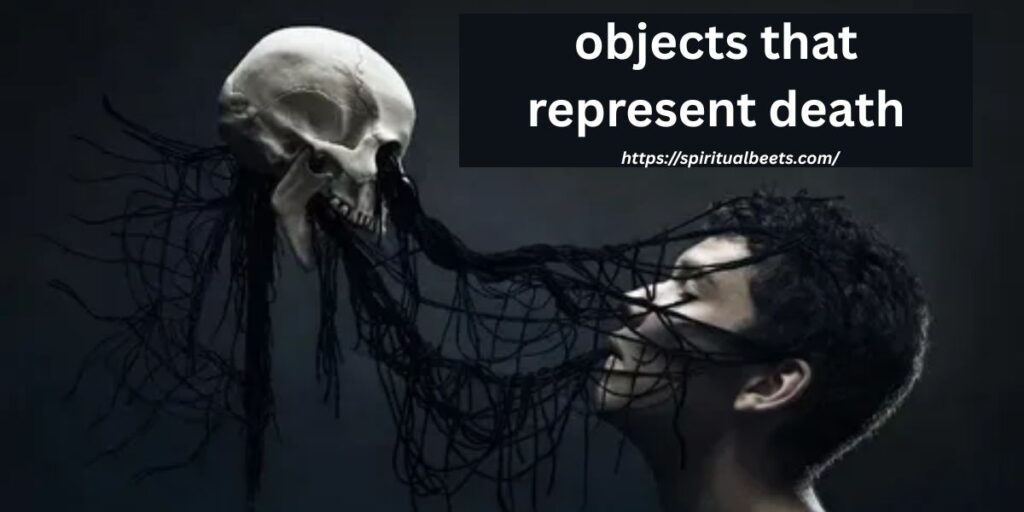
Some objects are symbols of death. Skulls often show this meaning. Black clothes can also represent mourning. Candles may be used in memory. Ravens and crows are seen as signs. Gravestones mark the end of life. Experts study these symbols in culture. They hold deep and respectful meaning.
death imagery
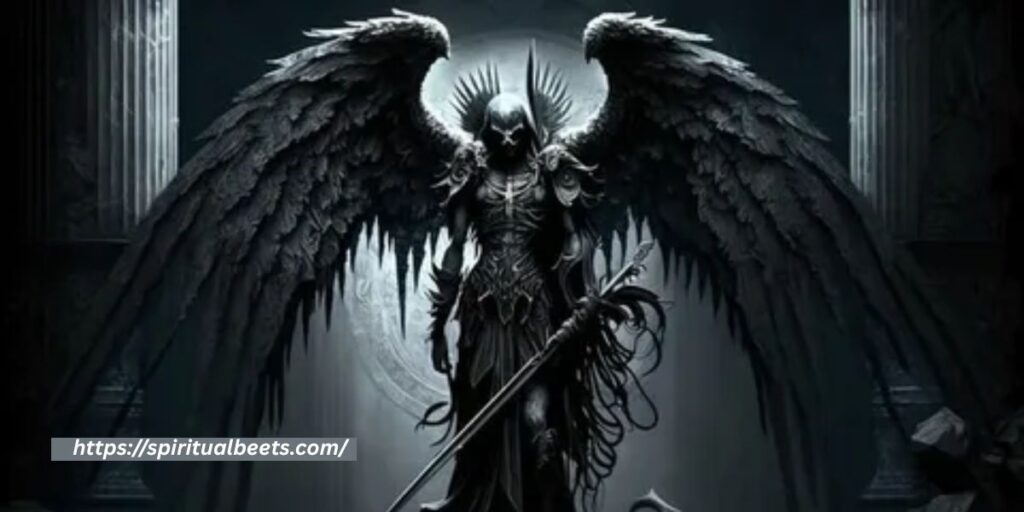
Death imagery shows symbols of dying. It appears in art, stories and poems. Common images are skulls, dark skies or fading light. These symbols express fear or peace. Writers use them to show deep emotions. Experts say it helps people face loss. It brings meaning to life’s end.
symbols in a lesson before dying
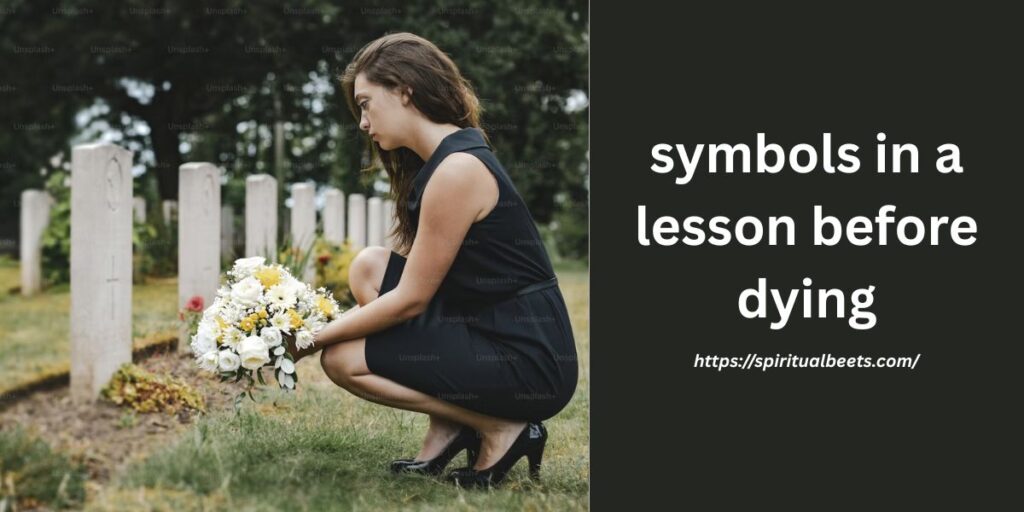
The novel uses strong symbols. The chair shows death and fear. The notebook means hope and growth. Food represents care and love. The cross shows faith in hard times. Each symbol has deep meaning. Experts say they reflect human struggle.
They help readers understand the story better.
afterlife symbols
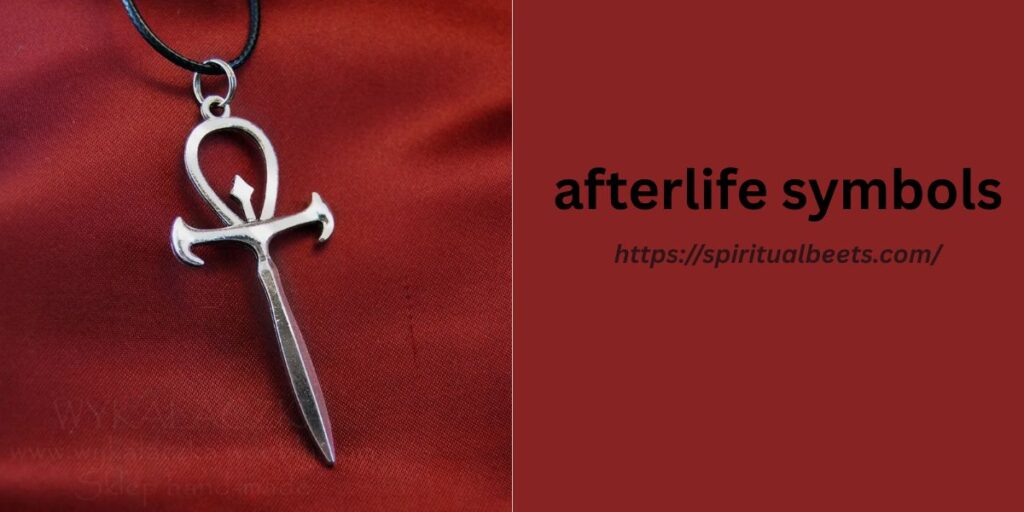
Afterlife symbols show beliefs about life after death. Common ones include angels, light and doves. They often mean peace and hope. Different cultures use different signs. Experts say symbols help people cope. They give comfort and meaning. These signs are spiritual, not scientific. Many trust their deep message.
symbols of life after death
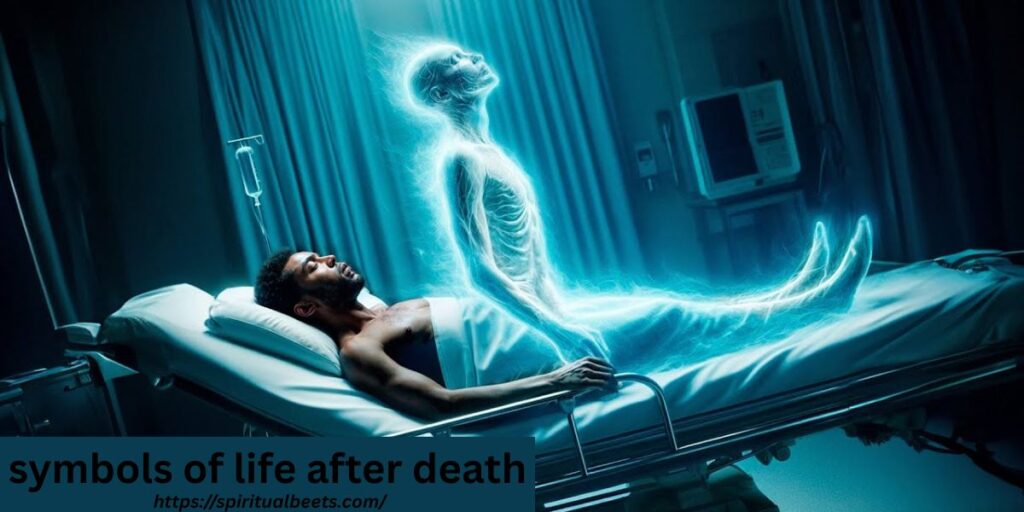
Many cultures share symbols of life after death. The butterfly means rebirth. The phoenix shows new life from ashes. White light is a common sign. Angels often represent the soul’s journey. Experts study these spiritual symbols. They give hope and peace. People trust them across time and faiths.
death angel logo

The Death Angel logo belongs to a metal band. It has a bold and sharp design. The style shows power and rebellion. Fans connect it with strength and energy. It is not linked to real angels. Experts see it as part of music branding. It expresses the band’s identity.
pagan symbols of death
- Pagan symbols of death hold deep meaning.
- The skull is a common sign.
- It shows mortality and change.
- The raven often means the soul’s journey.
- The scythe stands for life’s end.
- These symbols reflect nature’s cycles.
- Experts link them to ancient beliefs.
- They offer wisdom, not fear.
symbol for deceased person
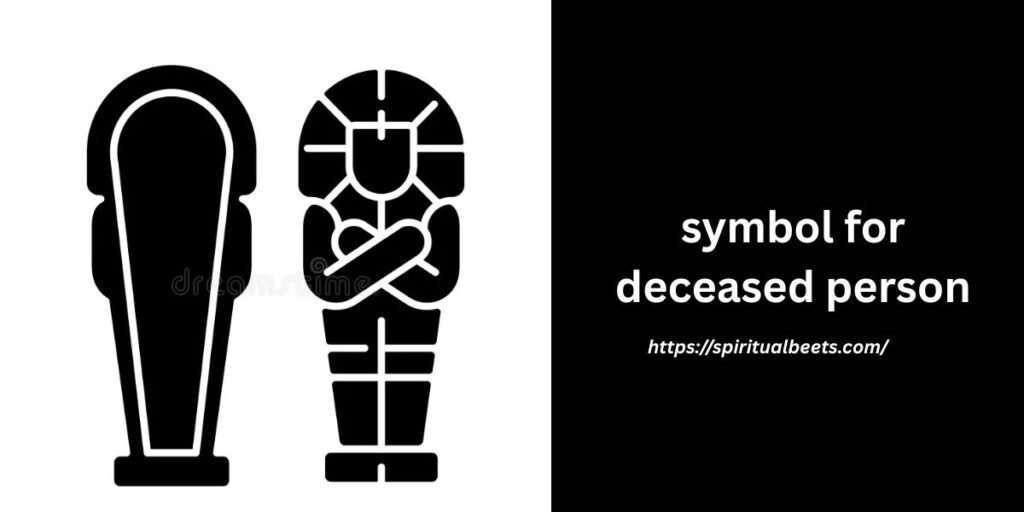
A symbol for a deceased person shows they have passed. It is used in records and writings. Common symbols include a cross or star. It helps keep information clear. Experts use it in genealogy and history. It shows respect and truth. This symbol is trusted and meaningful.
killer symbols
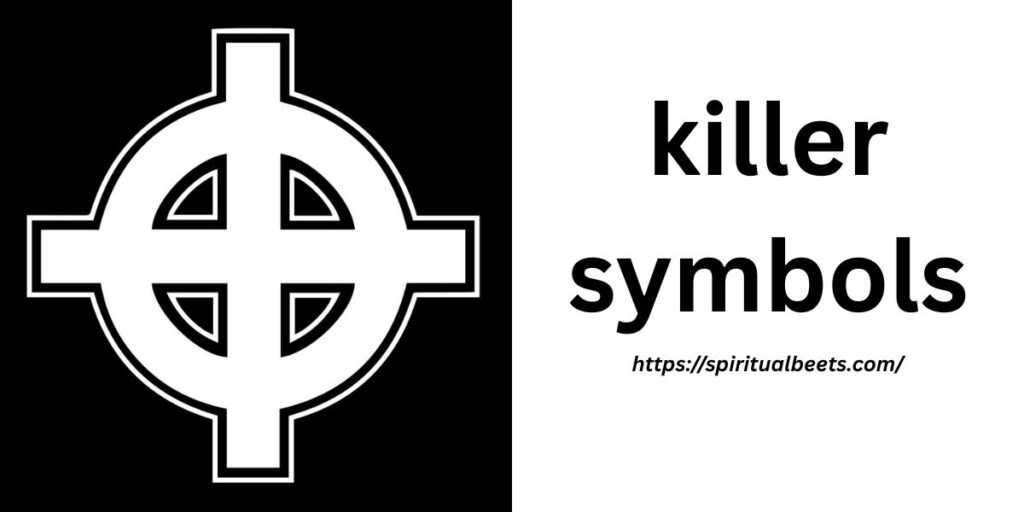
Killer symbols often represent danger or death. They appear in movies, games and art. Some show fear or warning signs. They may reflect dark thoughts or actions. Experts study them in psychology and media. They are not always harmful. Context matters most. Always understand the meaning behind symbols.
symbol of life and death
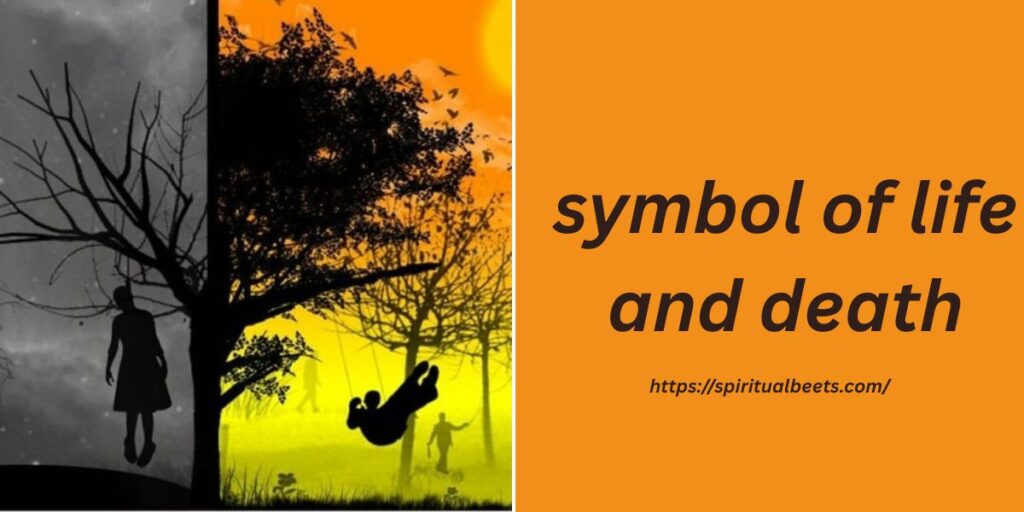
The symbol of life and death shows balance. It reminds us all things begin and end.
Common symbols are the tree, skull and cross. Each has deep meaning across cultures. Experts say they reflect human truth. They help us understand change. Life and death are part of nature.
symbols of death and life
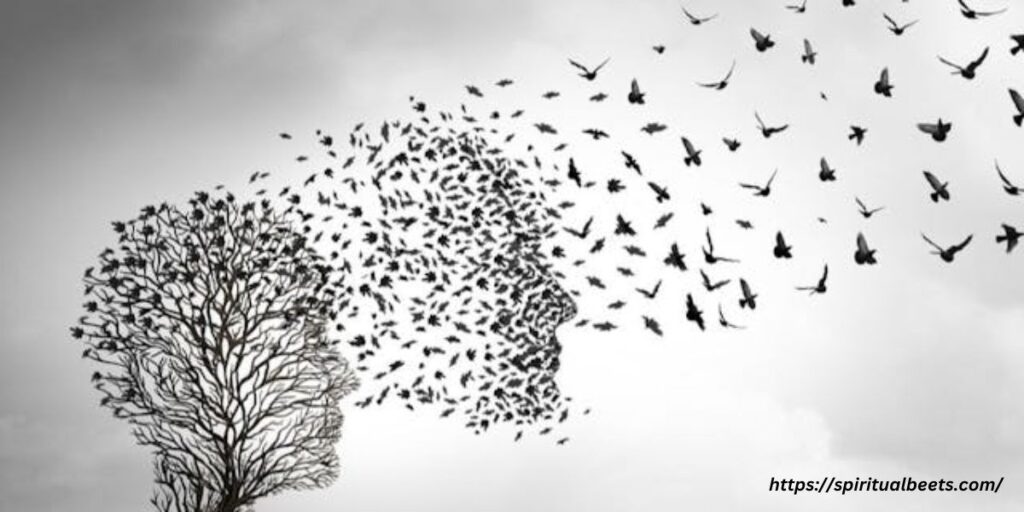
Symbols of death and life are powerful. A skull often means death. A cross can show both death and life. The tree of life shows growth and hope. Butterflies mean change and rebirth. Experts study these in many cultures. They help people understand life’s journey. Each symbol holds deep meaning.
life and death symbols
- Life and death have deep symbols.
- A tree often means life and growth.
- A skull may show death or endings.
- These symbols help people understand change.
- They appear in many cultures and faiths.
- Experts say they express human emotions.
- They are powerful, trusted and meaningful signs.
symbol for life and death
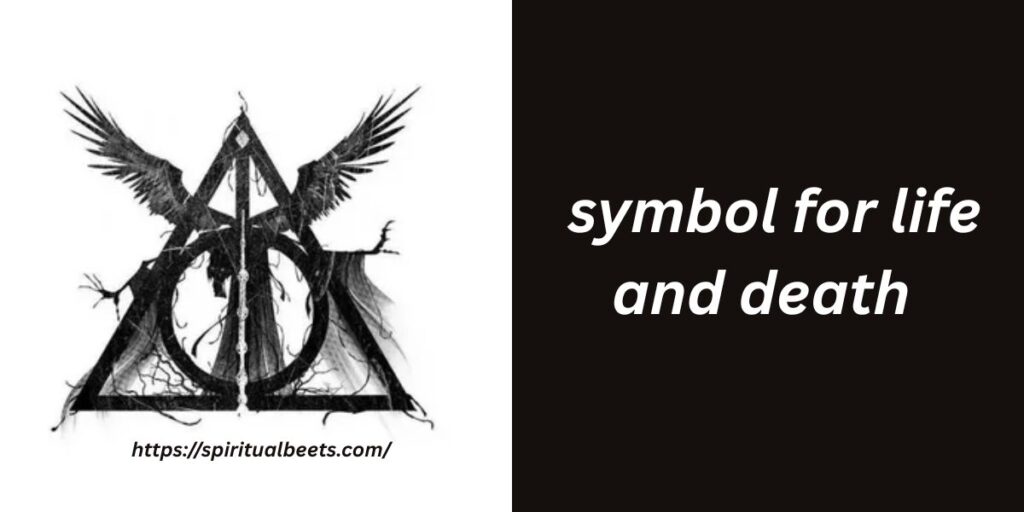
The symbol for life and death shows deep meaning. It often includes a skull or a tree. The skull means death or endings. The tree stands for life and growth. Many cultures use these signs. Experts say they reflect nature’s cycle. They help people understand change. They hold spiritual value.
symbols for life and death
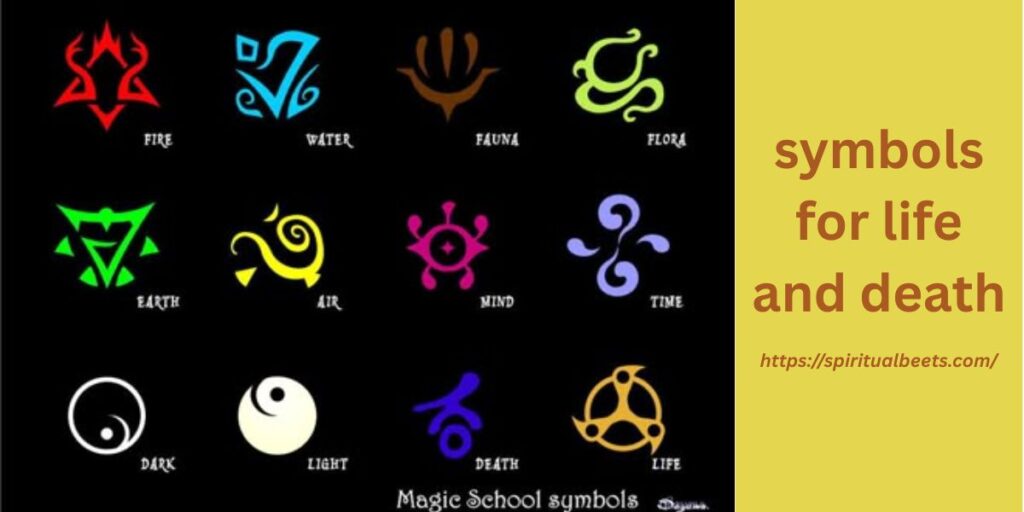
Symbols for life and death are found in many cultures. A tree often shows life and growth. A skull can mean death or endings. The cross stands for both life and sacrifice. Experts study these symbols in religion and art. They help people understand deep meanings. They are trusted and powerful.
symbols of life and death
- Symbols of life and death are powerful.
- A tree often means life and growth.
- A skull can show death and endings.
- The cross shows both life and sacrifice.
- These symbols help people understand meaning.
- Experts study them in many cultures.
- They bring comfort, wisdom and reflection.
symbol for someone who has died

A symbol for someone who died shows respect. It helps honor their memory.
Common symbols are crosses or candles. Some use white flowers or doves. These signs bring peace and comfort. Experts say symbols support healing. They hold deep spiritual meaning. Each one shows love and remembrance.
symbols of loss
Symbols of loss help us express grief. Common ones are black ribbons and candles. Empty chairs may show someone is missed. Flowers often honor the lost. Each symbol carries deep meaning. Experts say they support healing. They give comfort during sorrow. People trust them across cultures and faiths.
symbol for death of a loved one

A symbol for death shows loss and love. Common symbols include black ribbon or dove. Some use candles or flowers. These signs honor the person who passed. They bring comfort to the grieving. Experts say symbols help healing. They carry deep meaning. Each one shows respect and remembrance.
symbols for loss of loved one
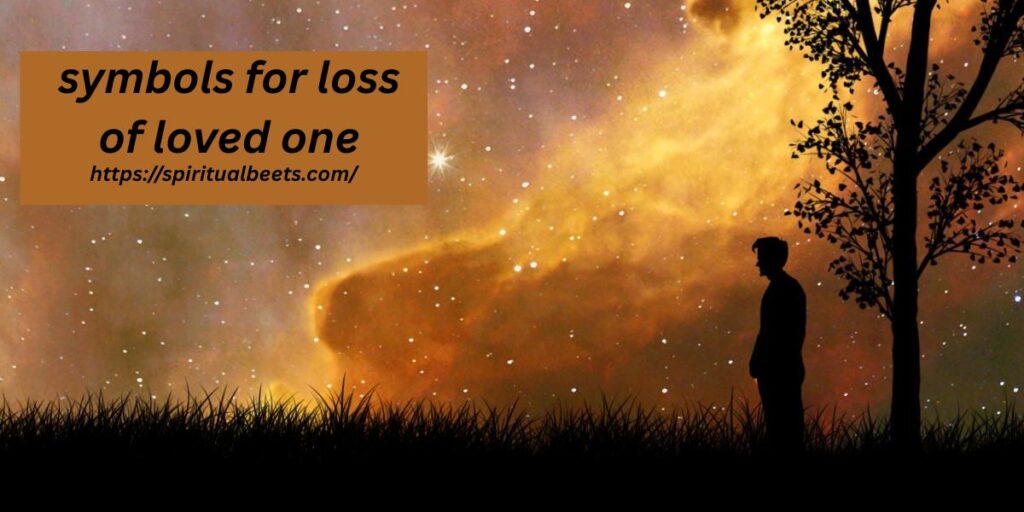
Dreams of losing a loved one can feel deep. Common symbols include darkness, crying, or empty rooms. These may show grief or fear. Some believe it is a message from the soul. Experts say it is part of healing. Such dreams reflect emotions. They are normal and often meaningful.
symbol of mortality
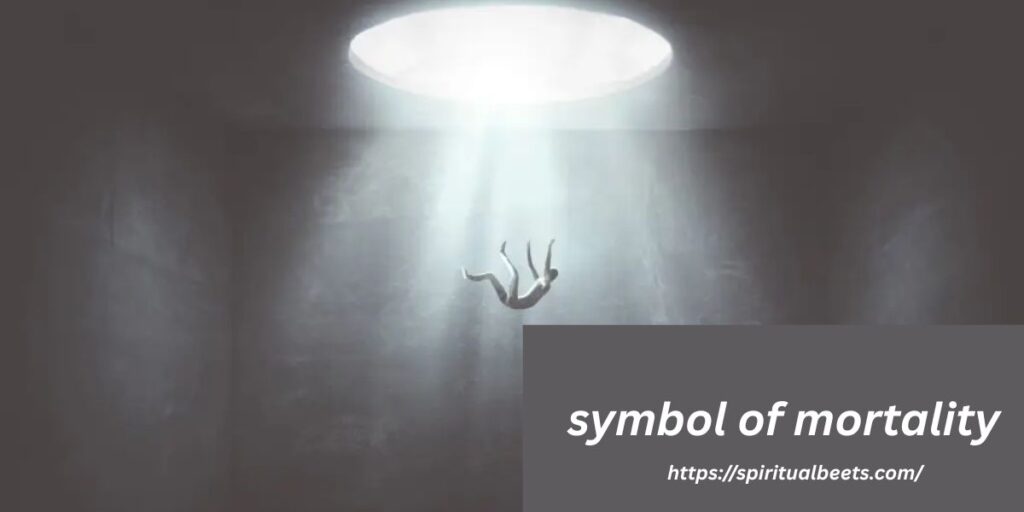
A symbol of mortality reminds us of death. It shows that life is temporary. Common symbols include skulls and hourglasses. They appear in art and religion. These symbols teach us to value life. Experts link them to deep reflection. They are powerful, timeless and widely respected.
Frequently Asked Question
What are symbols of death?
Symbols of death are signs, images, or objects that represent the end of life, loss, or the afterlife. They can be found in many cultures and traditions.
Why do different cultures use death symbols?
Cultures use death symbols to express beliefs about life, death and what happens after. They help people cope with grief and understand the mysteries of existence.
What does the skull represent?
The skull is a common symbol of death, representing mortality and the reminder that life is temporary.
What does the raven symbolize in death?
The raven is often seen as a messenger between the living and the dead. It symbolizes change, transformation and sometimes, the foretelling of death.
Why is the hourglass a death symbol?
The hourglass symbolizes the passage of time. It reminds us that time is limited and that death is inevitable.
Are all death symbols negative or scary?
Not all death symbols are negative. Some, like the lotus flower, represent rebirth or the peaceful passage into the afterlife.
How can symbols of death help us understand life and death better?
By exploring these symbols, we can gain insight into how different cultures view death, helping us cope with loss and reflect on the meaning of life.
Conclusion
Symbols of death, like Memento Mori, remind us of life’s fleeting nature. They help us reflect on what truly matters and encourage us to live with purpose. By understanding these symbols, we gain a deeper appreciation for life. They teach us to cherish the present and embrace every moment we have.
I have three years of professional experience writing articles about spiritual meaning, symbolism and metaphysical concepts. My expertise includes interpreting symbolic themes in religious texts, cultural traditions and personal experiences explaining abstract spiritual concepts through accessible analogies and real world examples and creating content that resonates with diverse audiences seeking deeper understanding of life’s purpose and universal truths. I specialize in crafting articles that balance intellectual rigor with emotional resonance, often incorporating elements of philosophy, psychology and cultural studies to help readers connect spiritual principles to practical life applications.

